Vizcaya Museum & Gardens
by habituallychic
03 . 11 . 19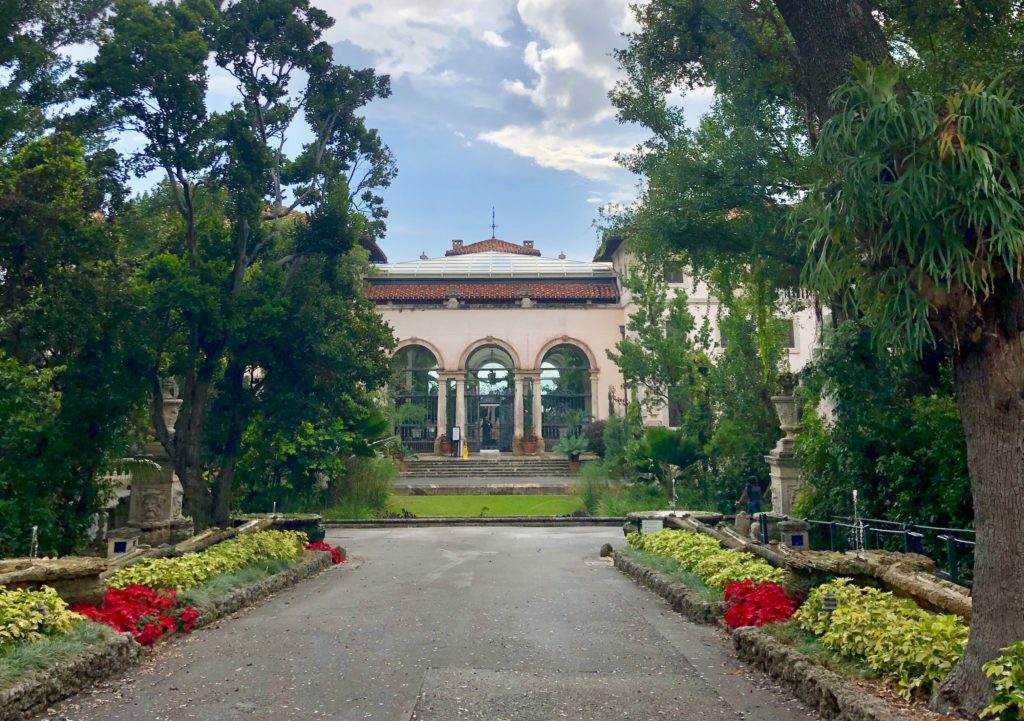
I’m going to be honest, I don’t love Miami but I’ll take warm weather where ever I can get it in in the middle of winter. I’m not into the nightclub scene though so I try to find outings that appeal to my more refined aesthetics which is why I love Vizcaya Museum and Gardens in Coconut Grove.
The Vizcaya Museum and Gardens, previously known as Villa Vizcaya, was designed as a winter estate for businessman James Deering, of the Deering McCormick-International Harvester fortune. Most fashionable people of the time were ensconced in Palm Beach but Deering’s decision to build in Miami was based in part on the fact that his father had already built a house in Coconut Grove.
The Italian Renaissance style villa and gardens were built between 1914 and 1922 with designer Paul Chalfin and architect F. Burrall Hoffman Jr.. The estate’s landscape master plan and formal gardens were designed by Colombian landscape designer Diego Suarez. “Paul Chalfin had attended Harvard and trained as a painter at the École des Beaux-Arts in Paris and was an associate of renowned decorator Elsie de Wolfe. She introduced Chalfin to Deering for the interiors of his Chicago home in 1910.” In the same year, Chalfin and Deering traveled through Europe together for the first trip, of many over the years, to collect ideas and begin acquiring art, antiquities, and furnishings for the unique subtropical estate.
“Villa Vizcaya is distinguished for its Italian Renaissance-inspired Mediterranean Revival architecture and sumptuously designed, detailed, and executed interior architectural elements with European, Asian, and American furnishings, and art and antiquities that span two millennia. The numerous sculptures in the gardens and villa are of ancient Greek, Greco-Roman, and Italian Renaissance origins and styles.”
Vizcaya was designed to look old for the time period and as if the contents had been collected for many generations. Hurricanes have damaged the house and gardens over the years, the most recent being in 2017, but the conservators do their best to preserve the house in the subtropical climate. 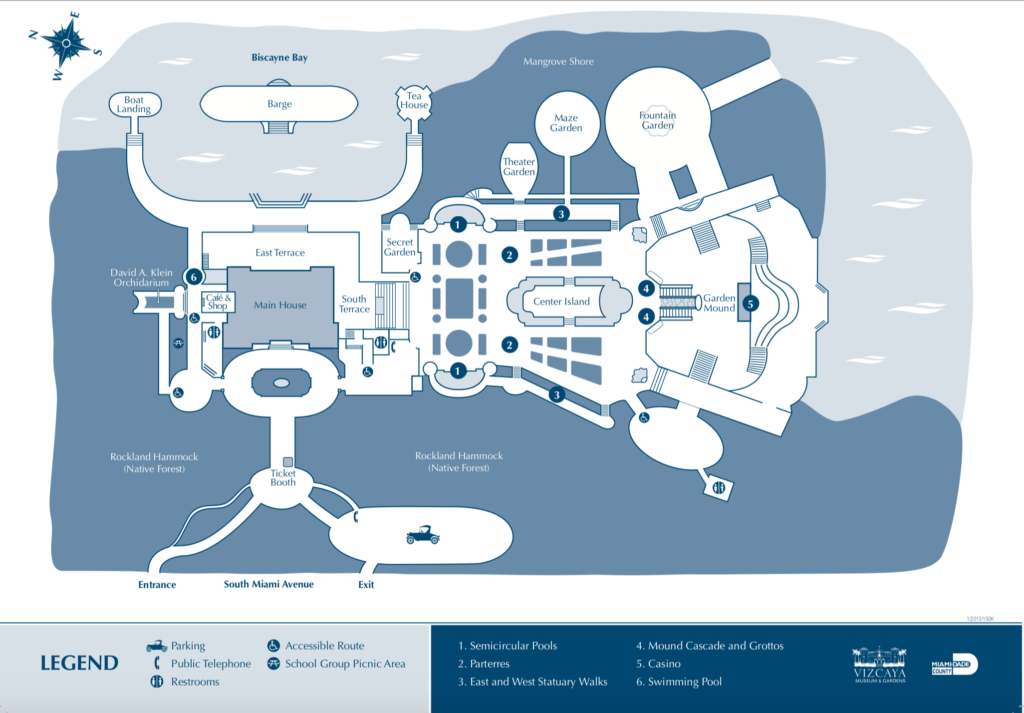
I first visited in 2010 and again after Art Basel in December 2018. It was the same day I was flying back to New York so I only had time to tour the interior of the house. If you decide to visit, I would leave 2-3 hours to see the house and walk around the extensive gardens.
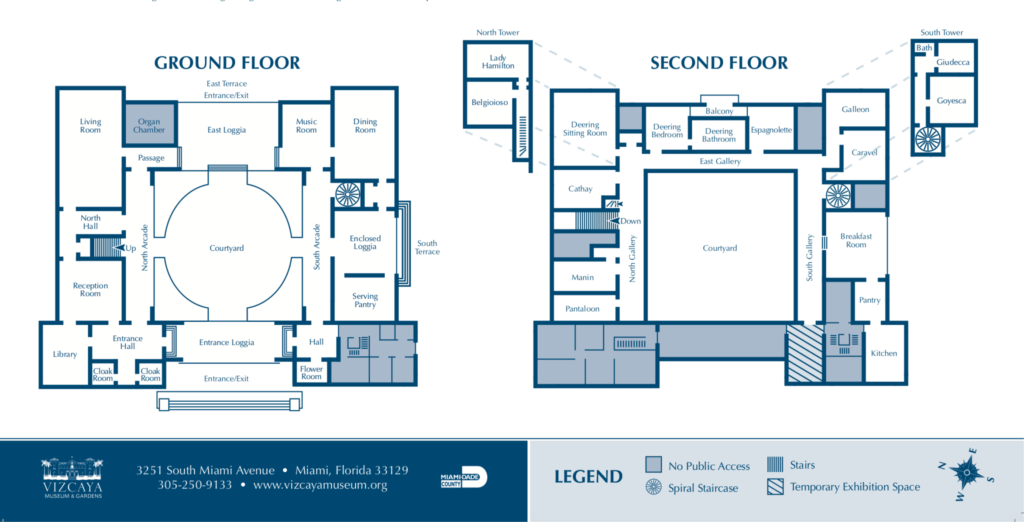
For this post, I’ll just be focusing on the ground floor. I took too many photos to include the entire house in one post. Also, I feel like I should add that these are not the best house photos I have ever taken. Some of the interior rooms were quite dark and I was touring with a friend. When I visit historic houses alone, I can go at my own pace and take more time photographing each room.
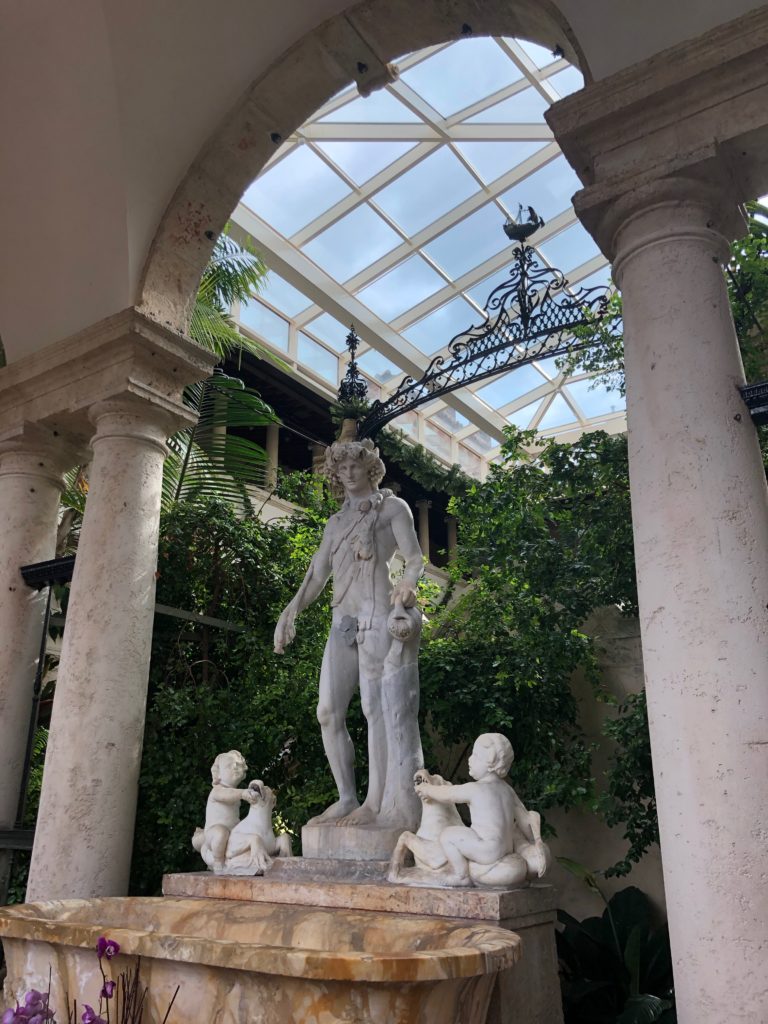
The interior Courtyard which is the center of the house had to be enclosed to protect the house and contents from the elements and hurricanes.
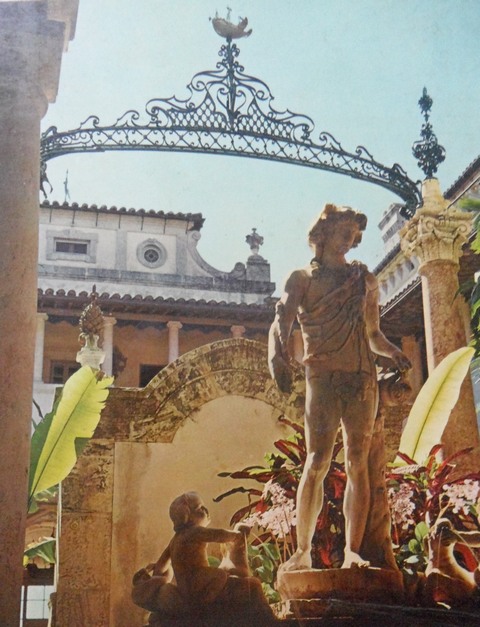
This old photo shows what the Entrance Loggia looked like leading to the Courtyard without a covering.
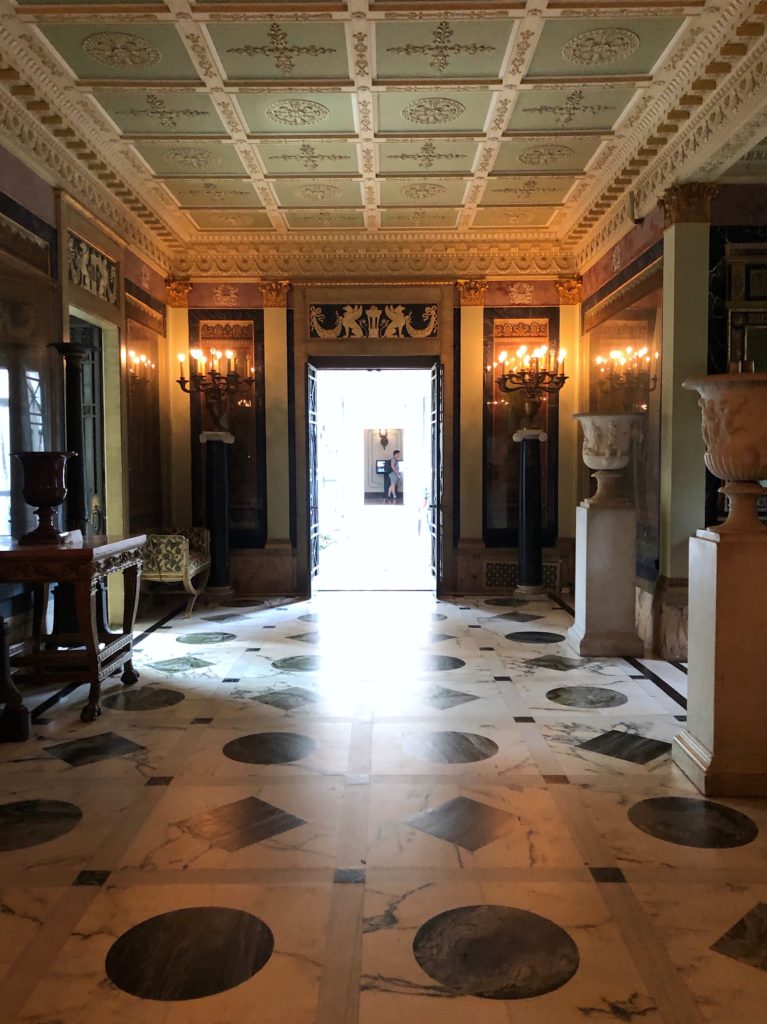
On our tour, we headed right but guests to Vizcaya would have been led to the Entrance Hall on the left. I’ve reordered my photos to follow the path of a fashionable guest would have done in the 1920s.
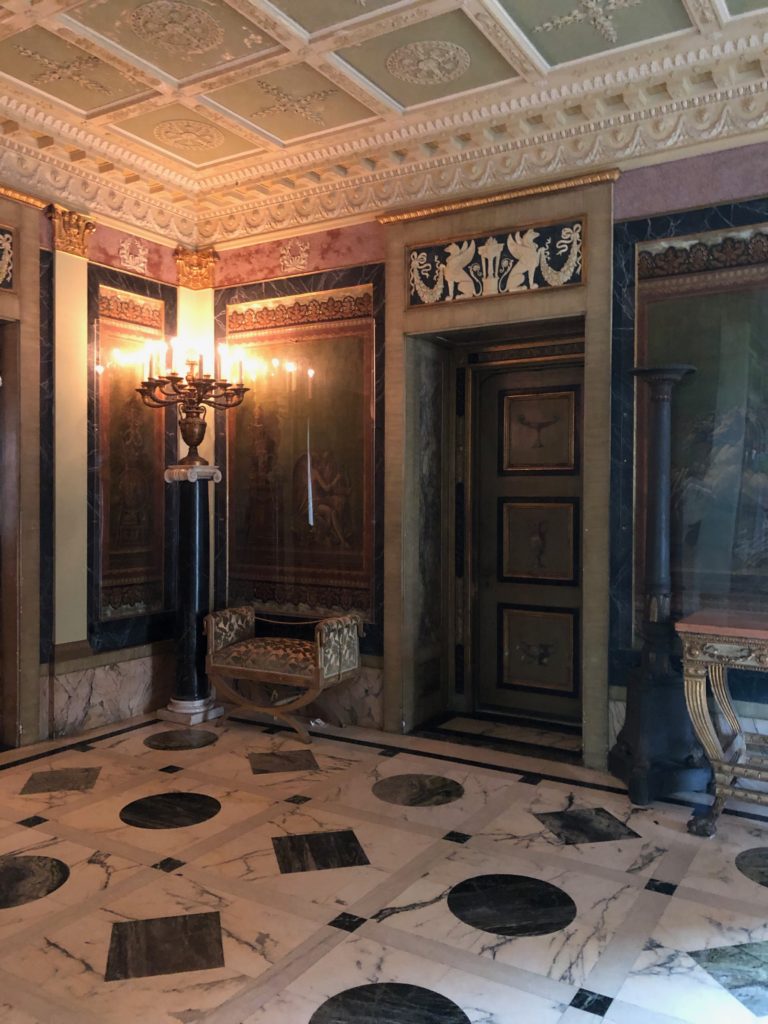
Upon arrival at Vizcaya, guests would pass through the Entrance Hall on their way to the rest of the main house. The hand-painted antique wallpaper, hidden under protective plexiglass, was from Paris while the floor and ceiling were created for the house.
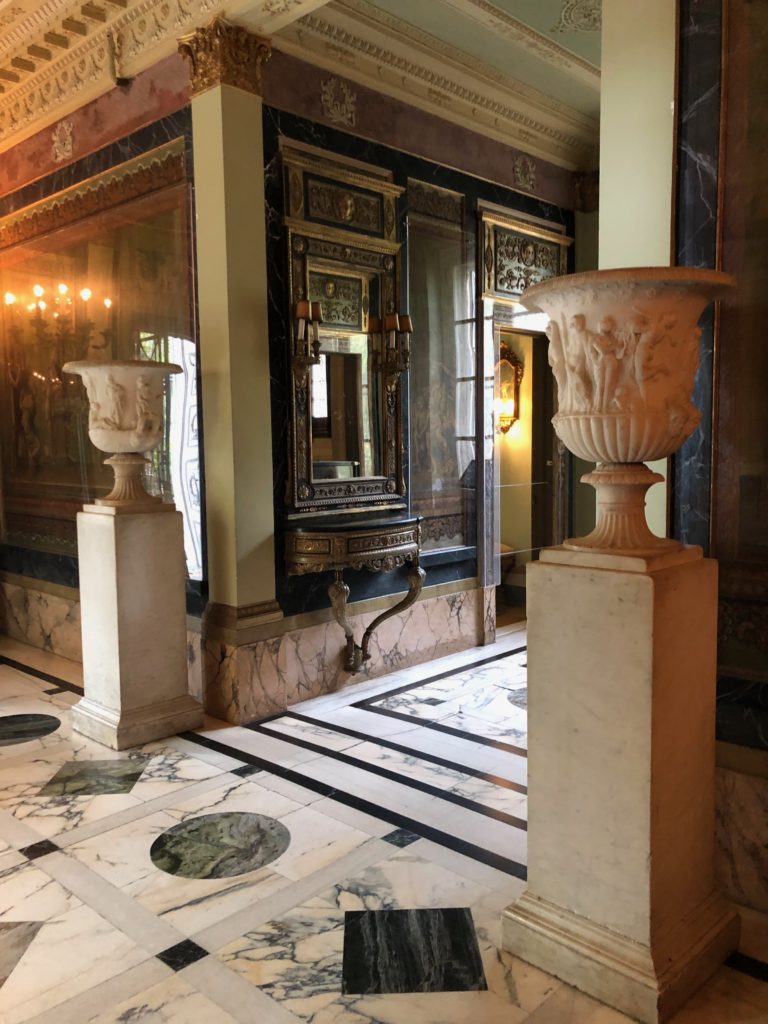
Guests would freshen up in one of the two powder and cloak rooms located down this small hallway.
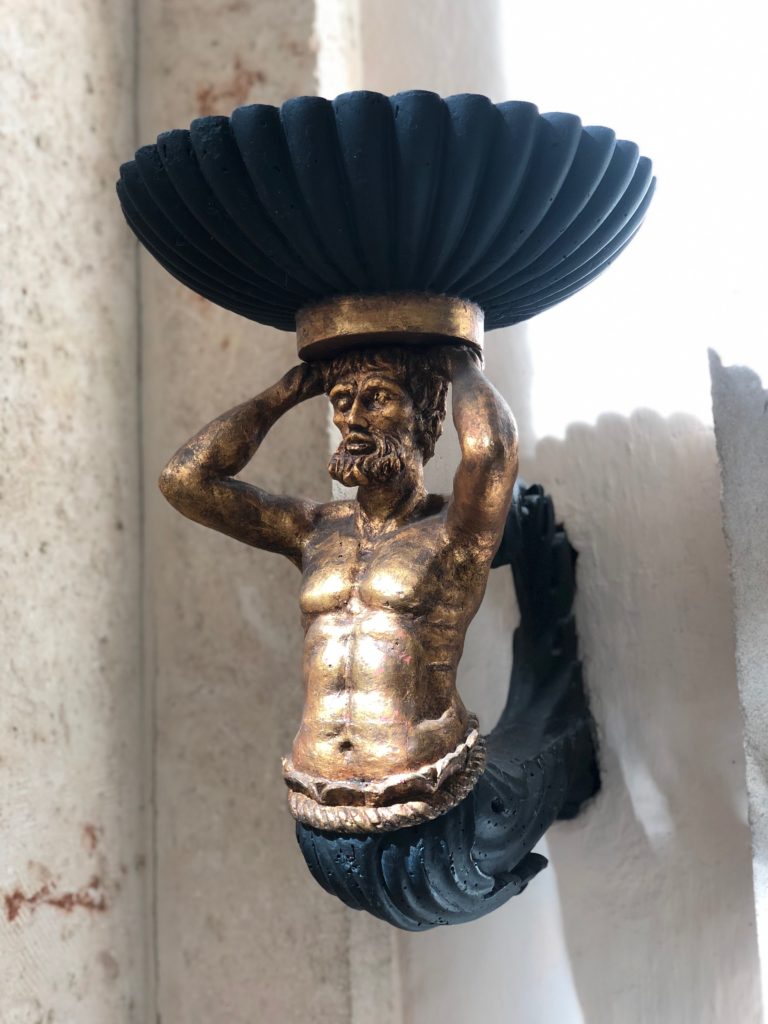
Anything functional, like a light or sconce, was also beautifully designed or an antique. This giltwood wall bracket depicts a mer-man.
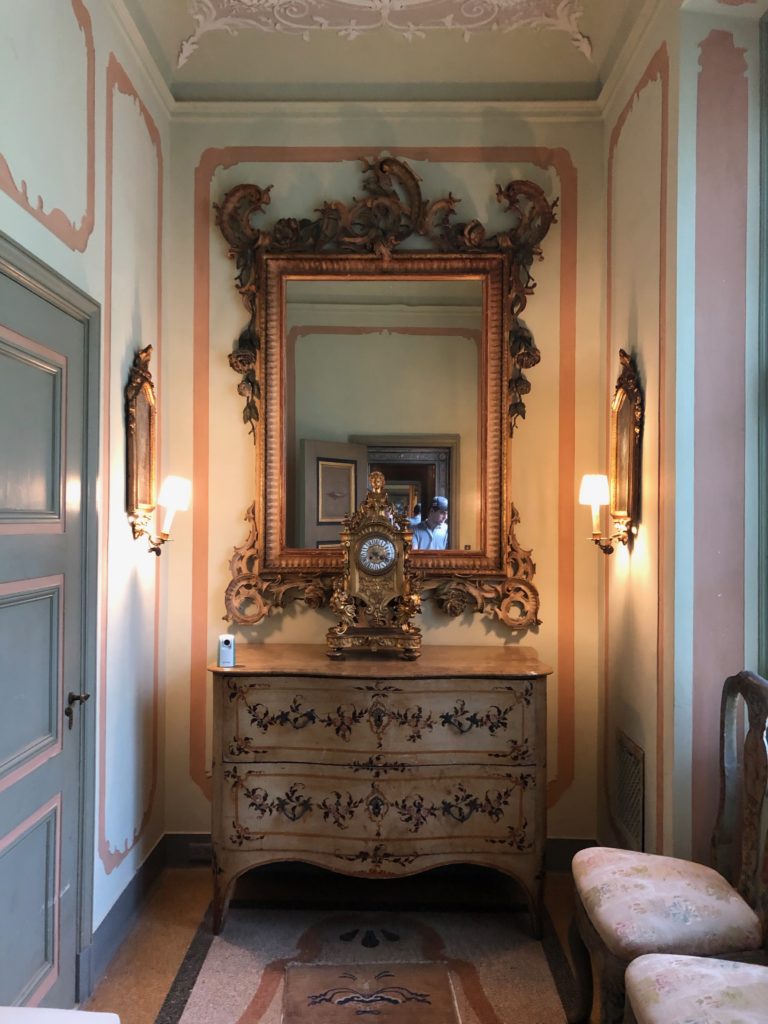
This pink trimmed room would have been for the ladies.
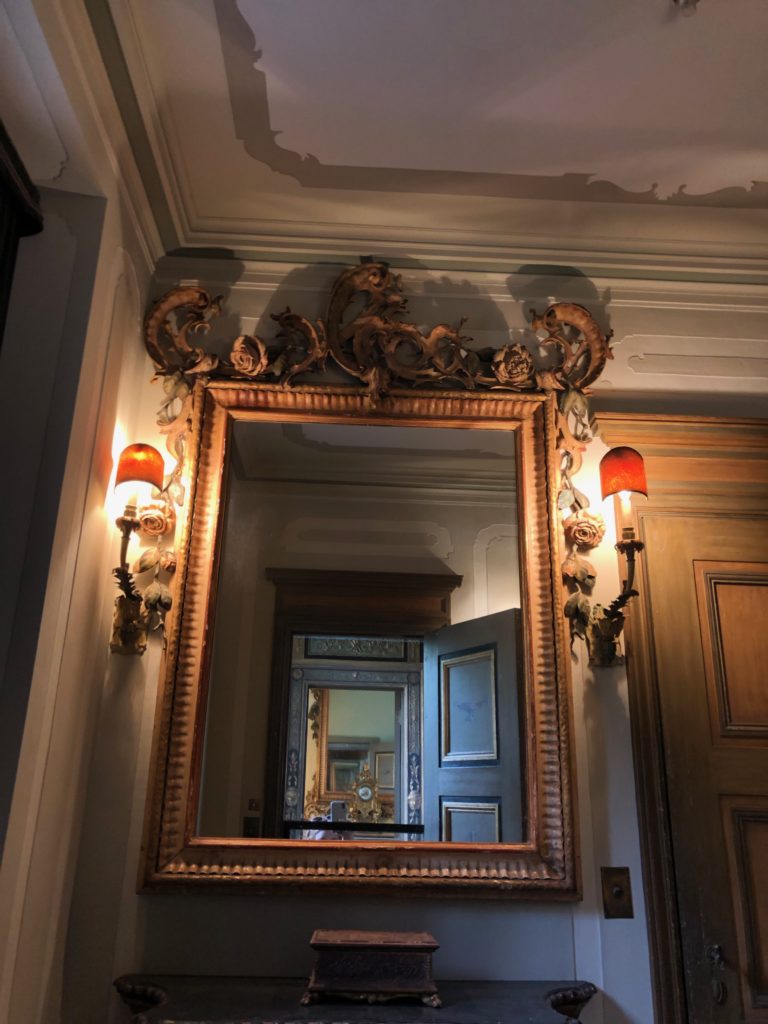
Across the way, is the room for gentleman.
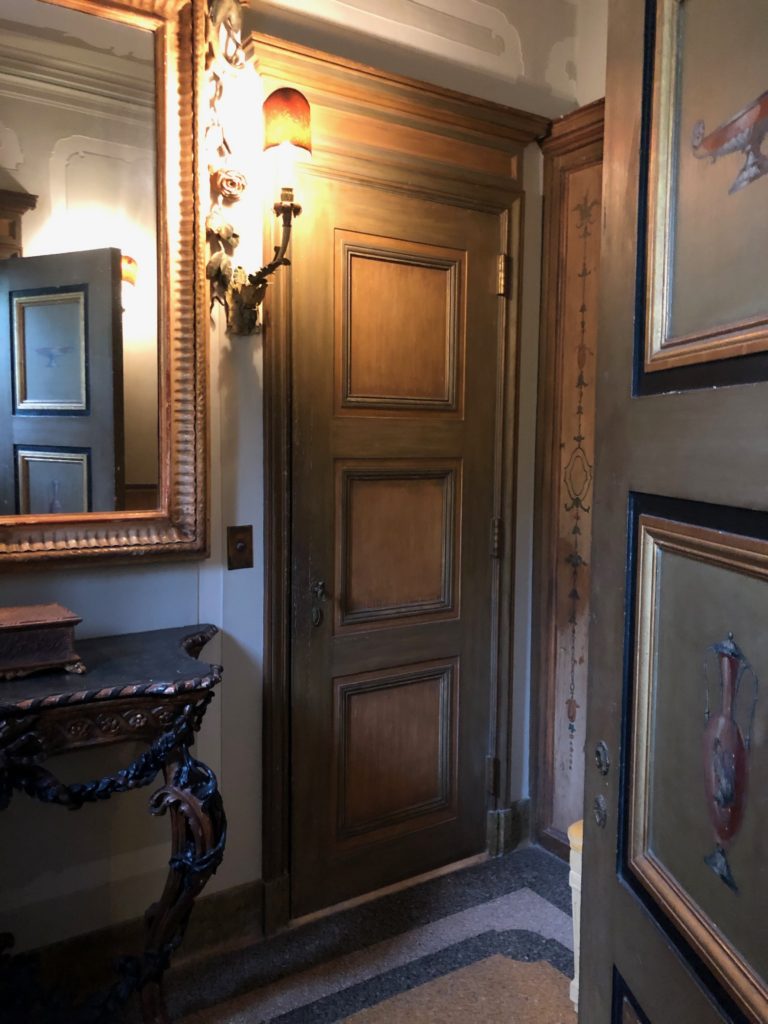
Another view of the gentleman’s cloakroom.
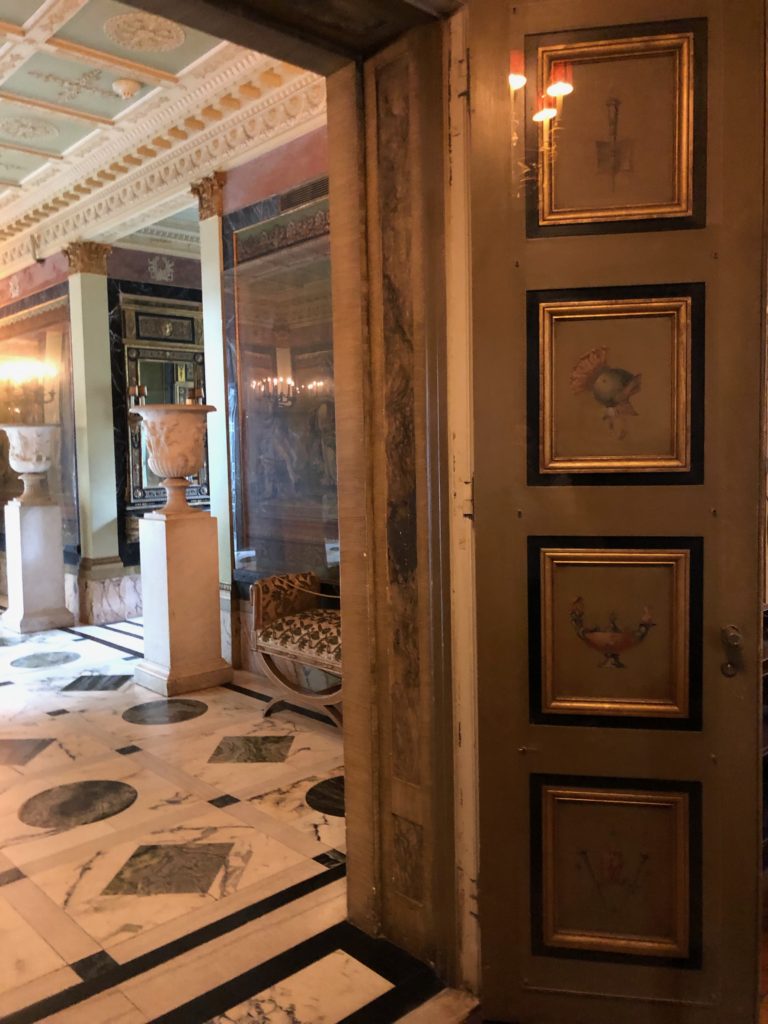
“Deering and his artistic director, Paul Chalfin, followed a common practice among the upper classes by decorating Vizcaya’s rooms in different historic styles. This suggested that Vizcaya was not a new structure, but rather one that had been occupied for many generations.”
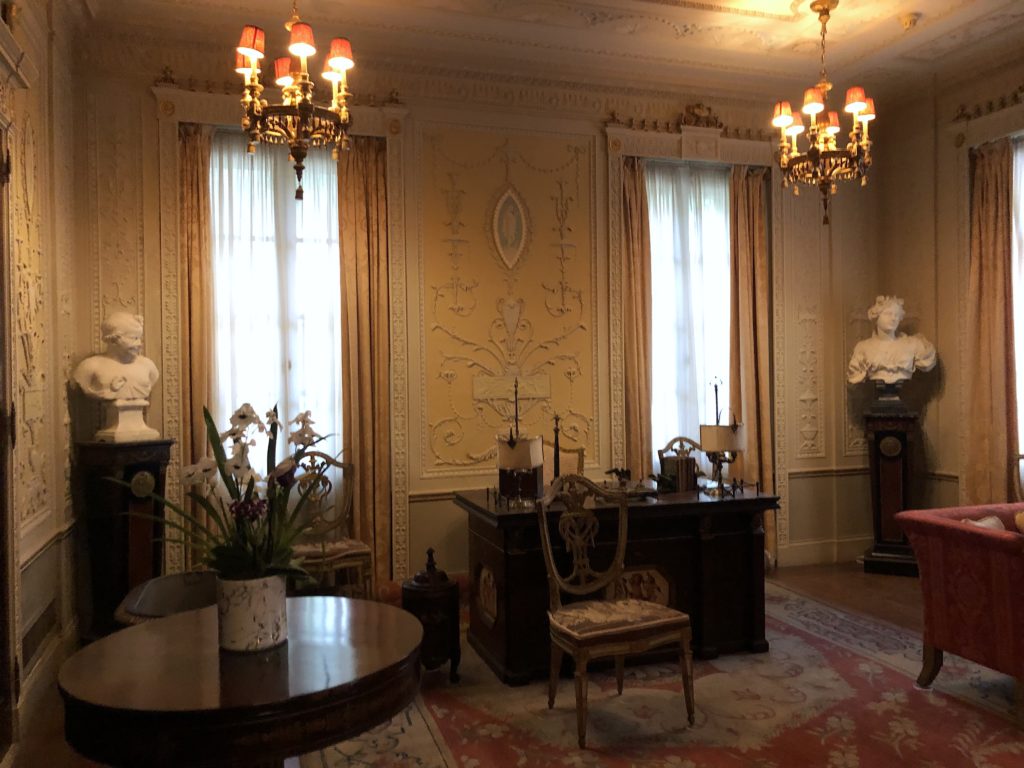
James Derring’s library sits next to the entrance hall and reception room. It could have been closed off to guests and when the door in the bookcase side was closed, it appeared to be part of the bookcase.
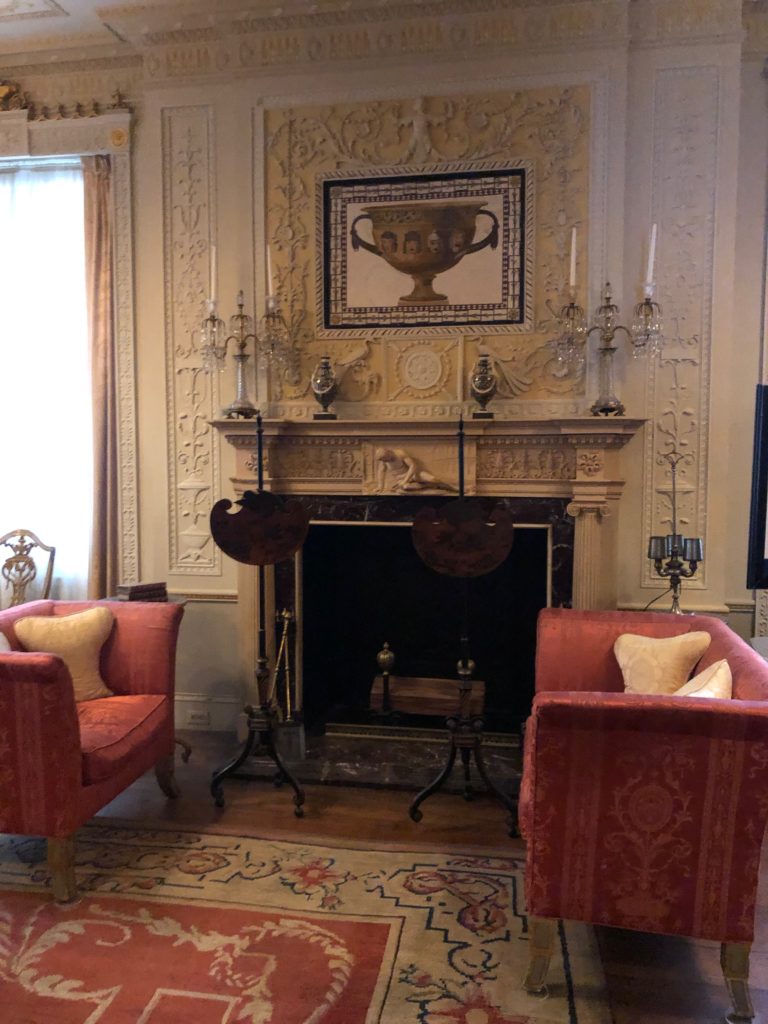 “Most American mansions of the early 1900s included a library inspired by aristocratic European traditions. The library was designed in the neoclassical Adams style, named after 18th-century Scottish architects Robert and James Adams.”
“Most American mansions of the early 1900s included a library inspired by aristocratic European traditions. The library was designed in the neoclassical Adams style, named after 18th-century Scottish architects Robert and James Adams.”
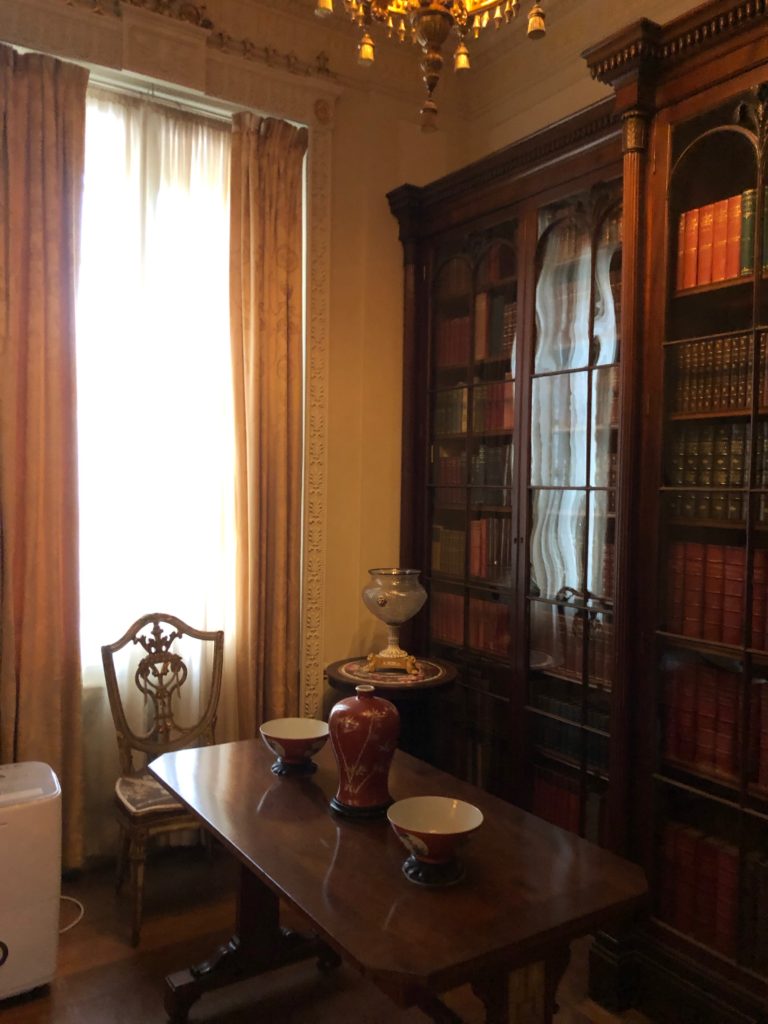
“Each spring, Deering departed for cooler climates and the Vizcaya staff would wrap his books individually to protect them from Miami’s summer humidity.”
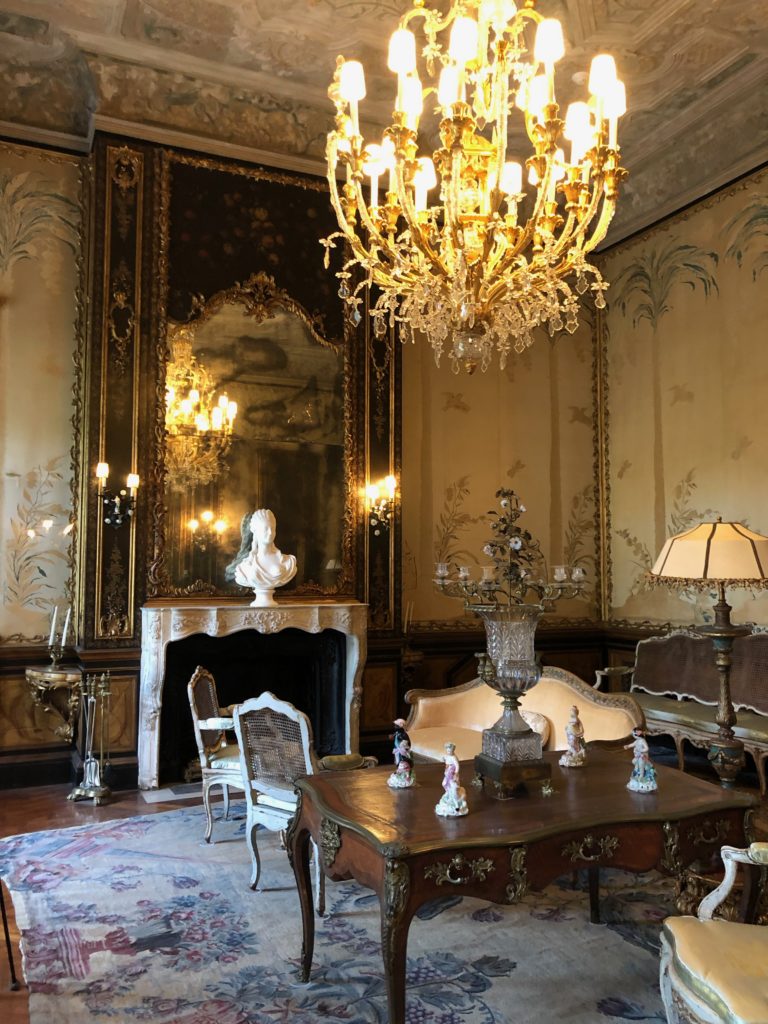
The Reception Room looks like an Italian version of Versailles but was inspired by Palermo, Italy.
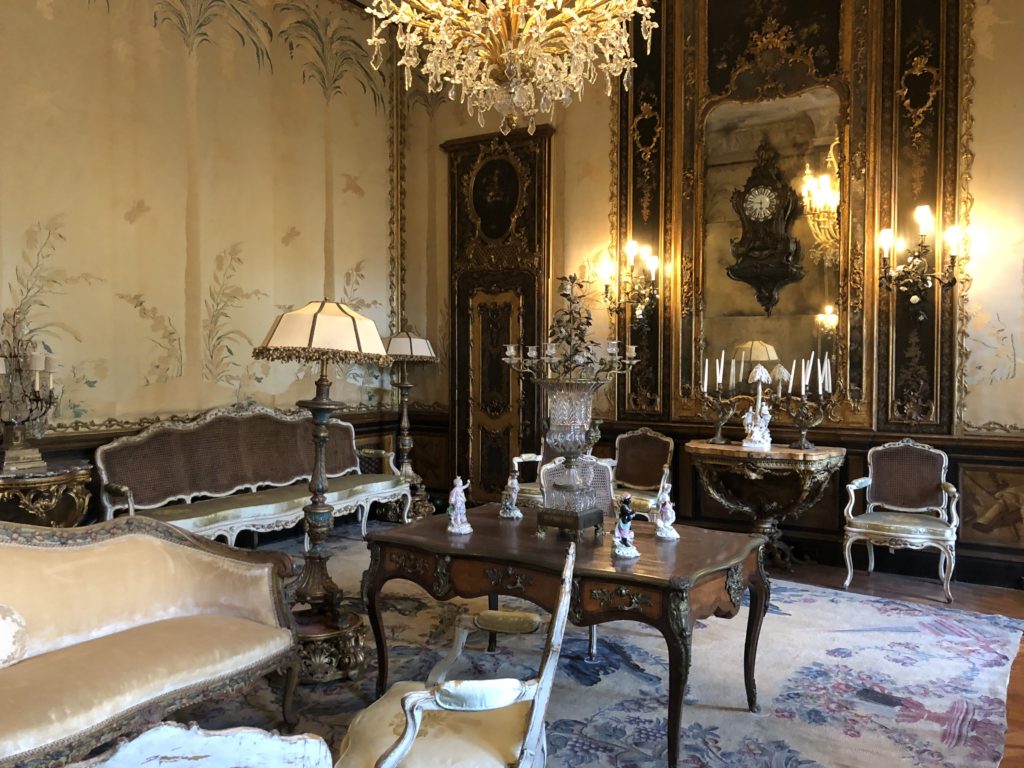
“Valuable historic objects purchased in Europe along with elements created specifically for Vizcaya were used to achieve the final effect.”
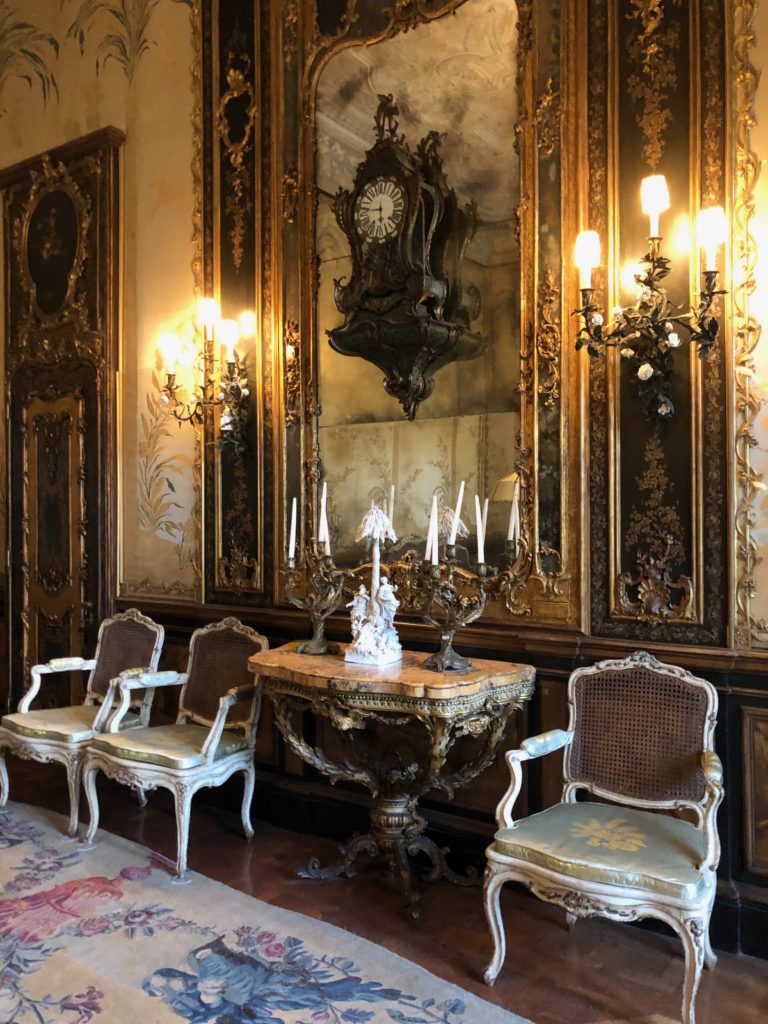
“At Vizcaya, the reference to the past was coupled with an enthusiastic embrace of technology, modernity and comfort. Regardless of its Baroque appearance, Vizcaya was a very modern house. Many are surprised to learn that it was built largely of reinforced concrete, with the latest technology of the period, such as generators and a water filtration system. Vizcaya was also equipped with heating and ventilation, two elevators, a dumbwaiter, a central vacuum-cleaning system and a partly automated laundry room.”
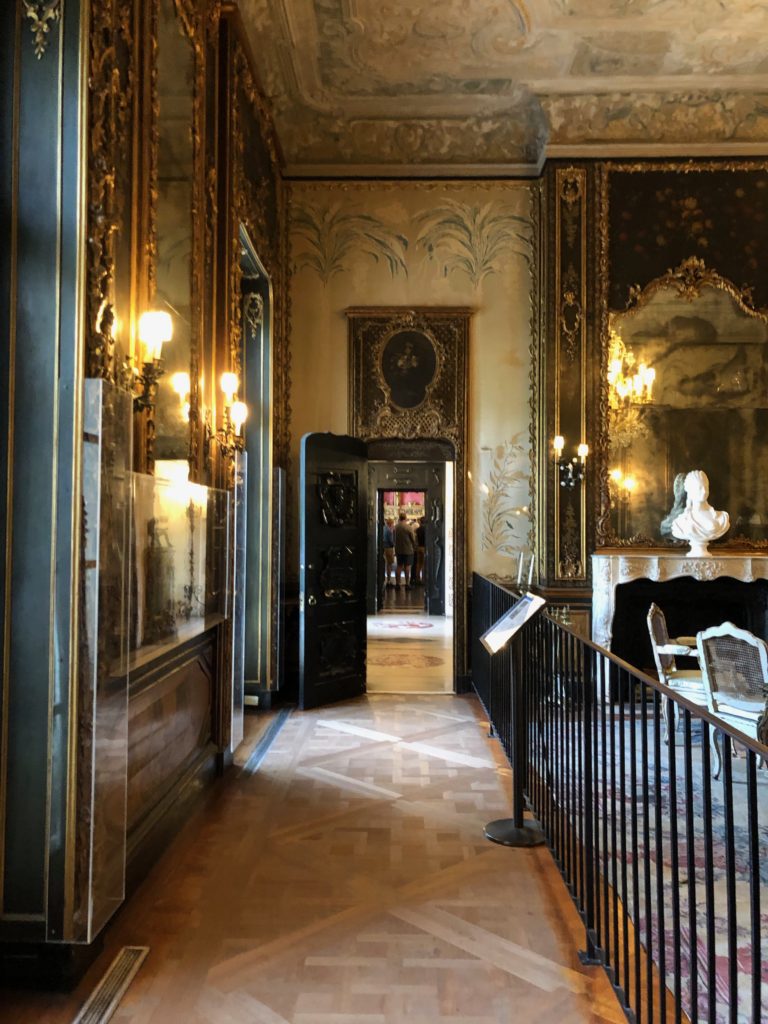
The view from the Reception Room through the hallway to the Living Room.
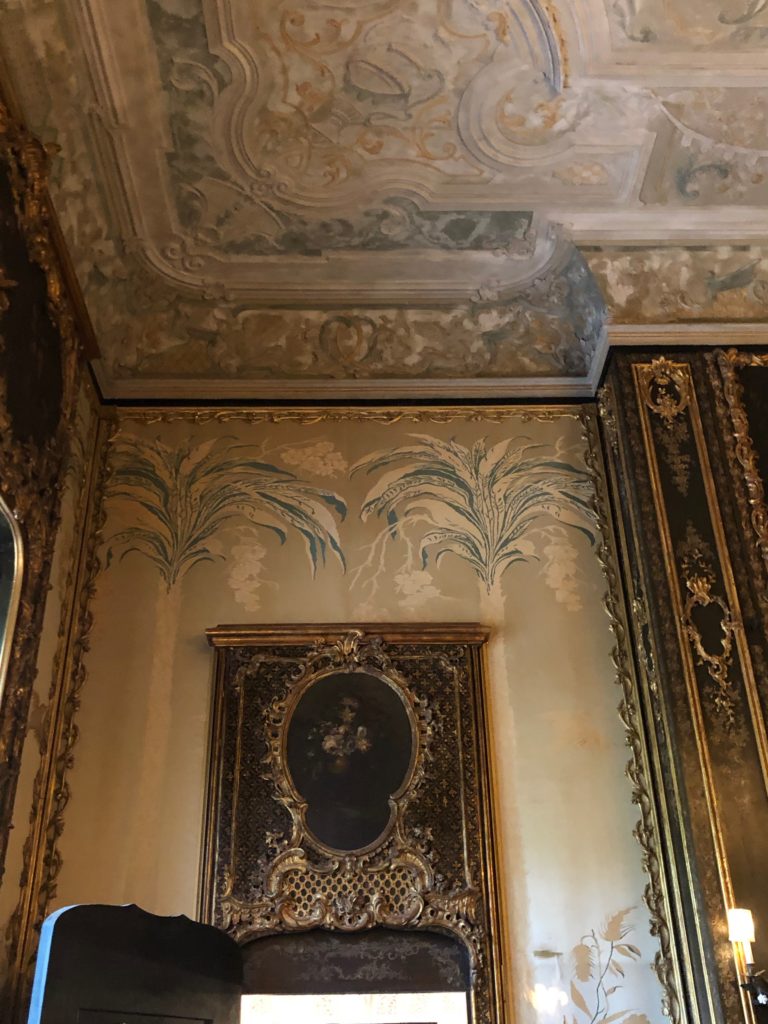
My favorite part of Vizcaya is the almost overwhelming mix of patterns and materials. When preservationists talk about saving homes because no one could replicate the work in them, this is the best example. Artisans who do this type of work probably don’t exist today.
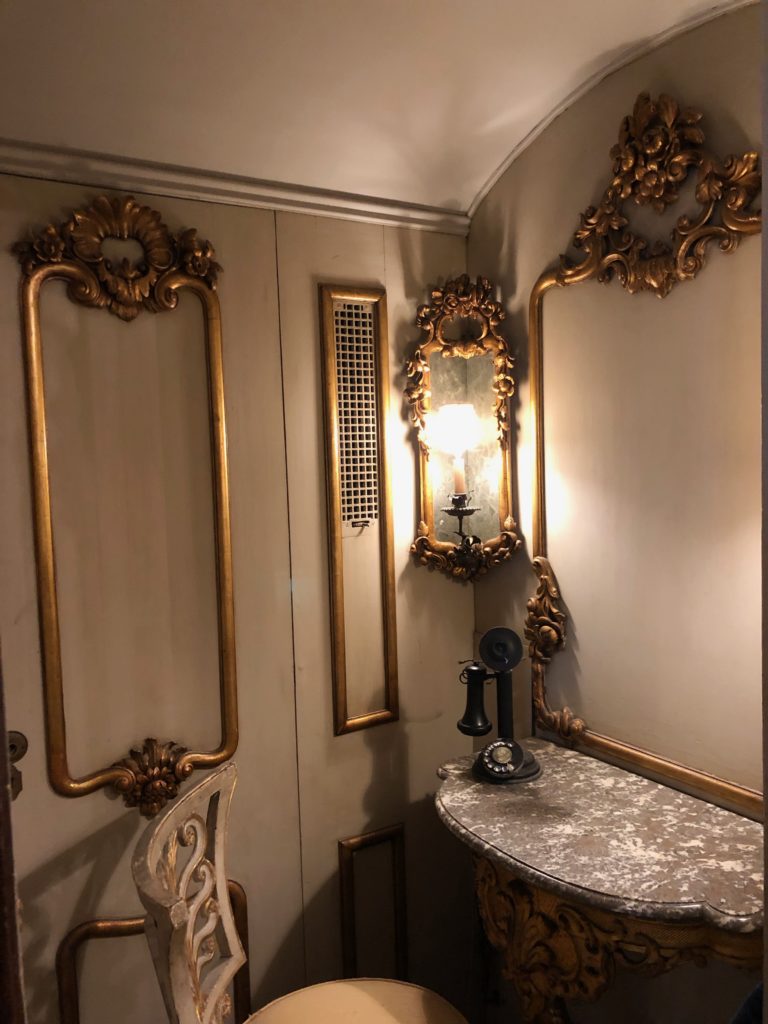
The Telephone Room is not listed on the map but it’s the tiny space that sits between the the Reception Room and North Hall and is one of my favorite spaces. It’s so charming.
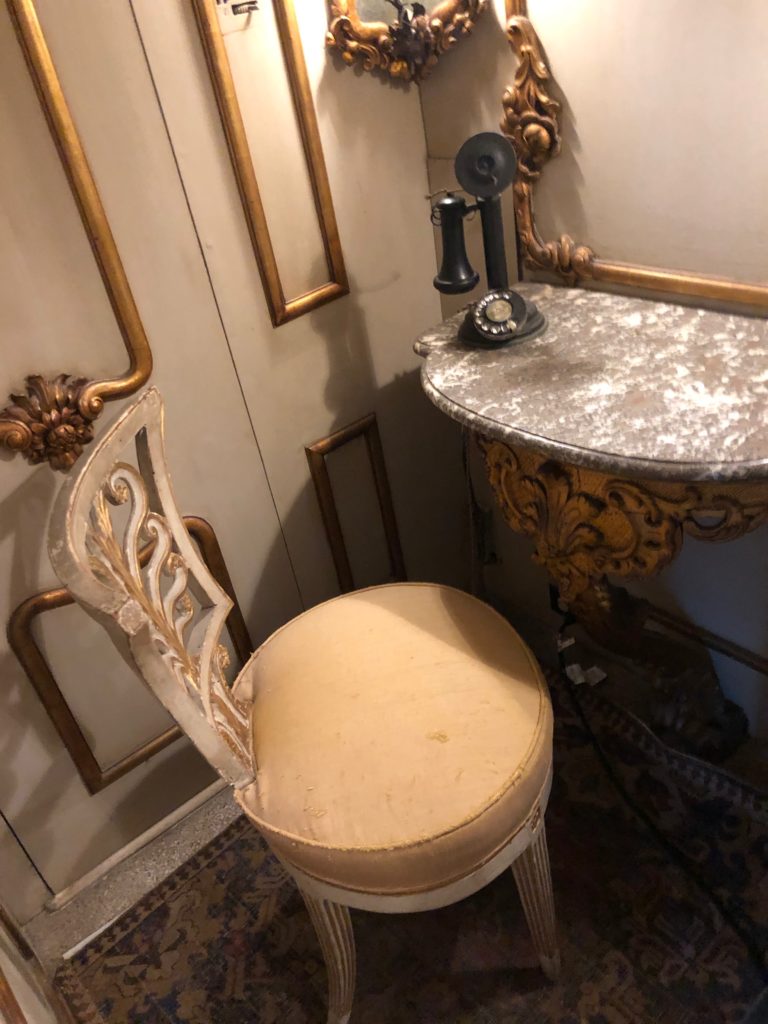
The room sits underneath the stairs and there’s a little door on the back wall. I wonder what was behind it but perhaps it just housed the technology for the phone or other mechanics or Narnia.
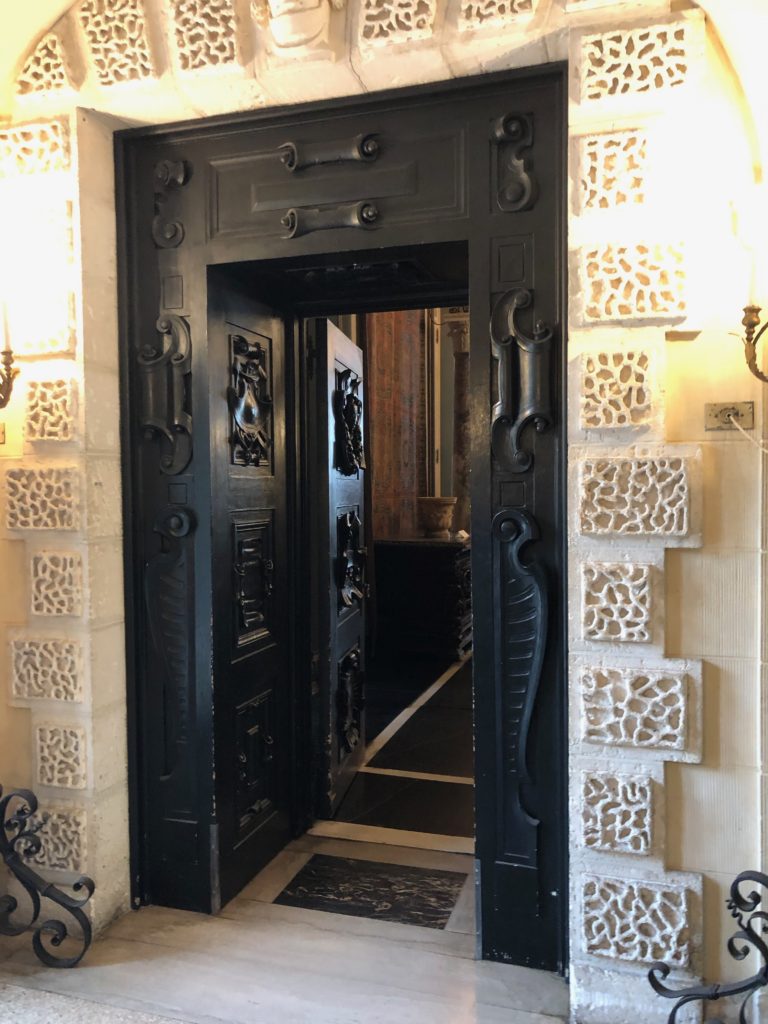 Door to the North Hall.
Door to the North Hall.
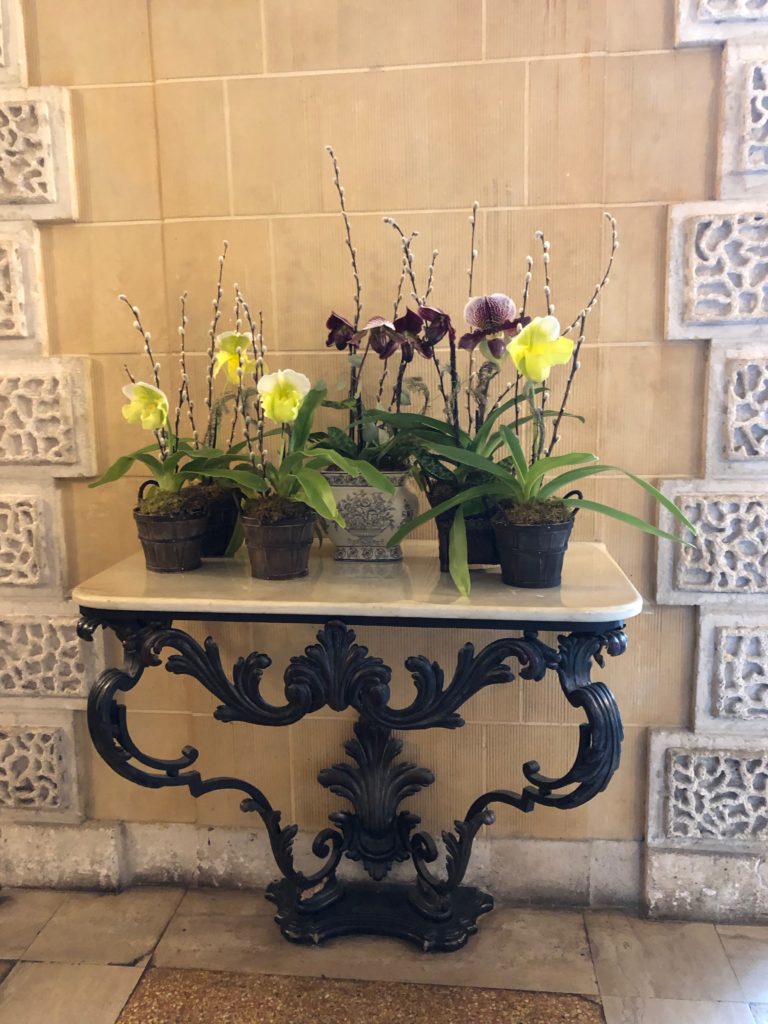
Deering was a fan of orchids.
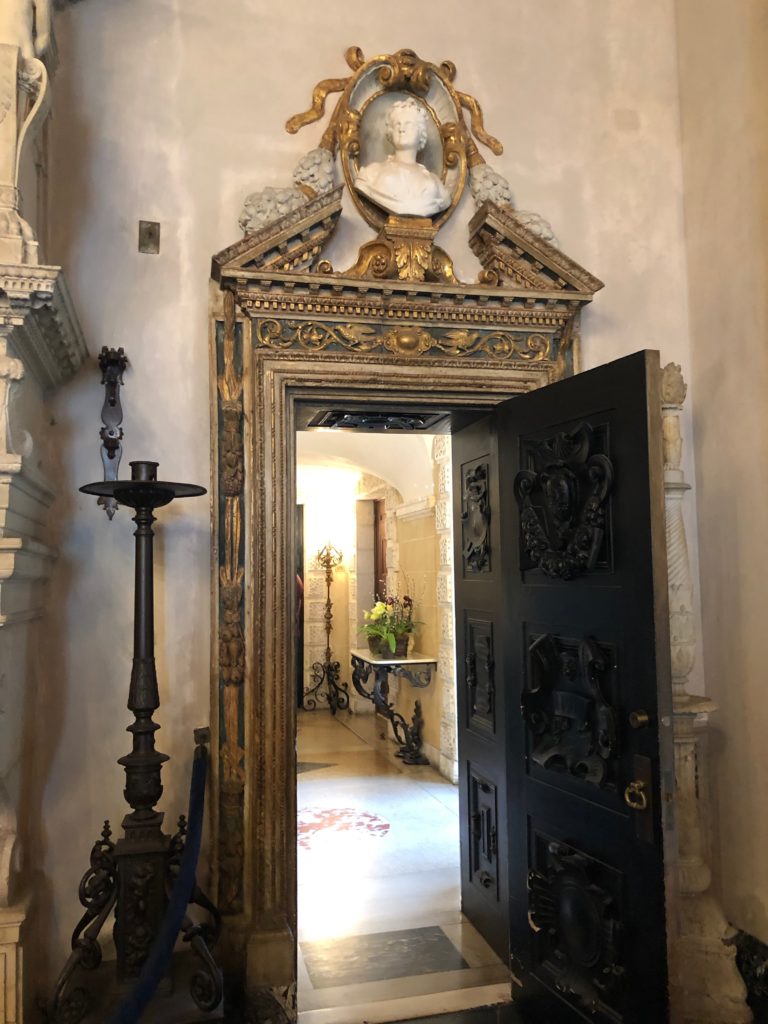
Since the original courtyard was open to the elements, each interior room has heavy door leading to the hallways.
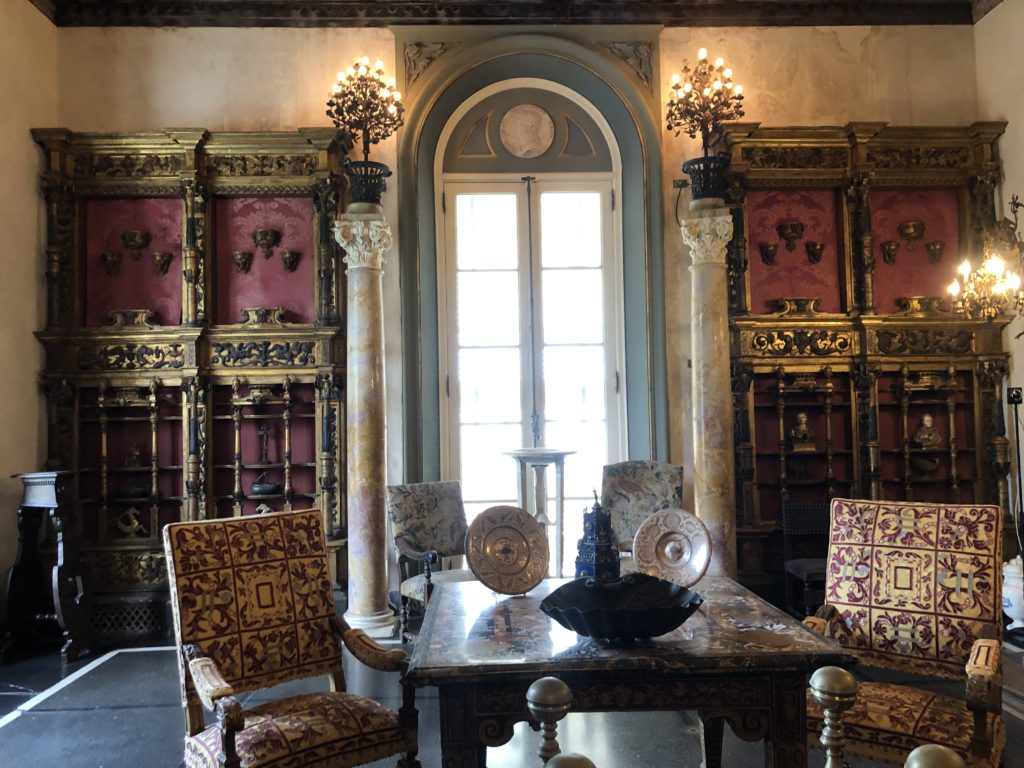
The Living Room was the largest room in Vizcaya. It has been called the “Renaissance Hall” because many of the objects were created during the European Renaissance. “These significant artifacts showed Deering’s guests that their host was a cultured man with refined taste.”
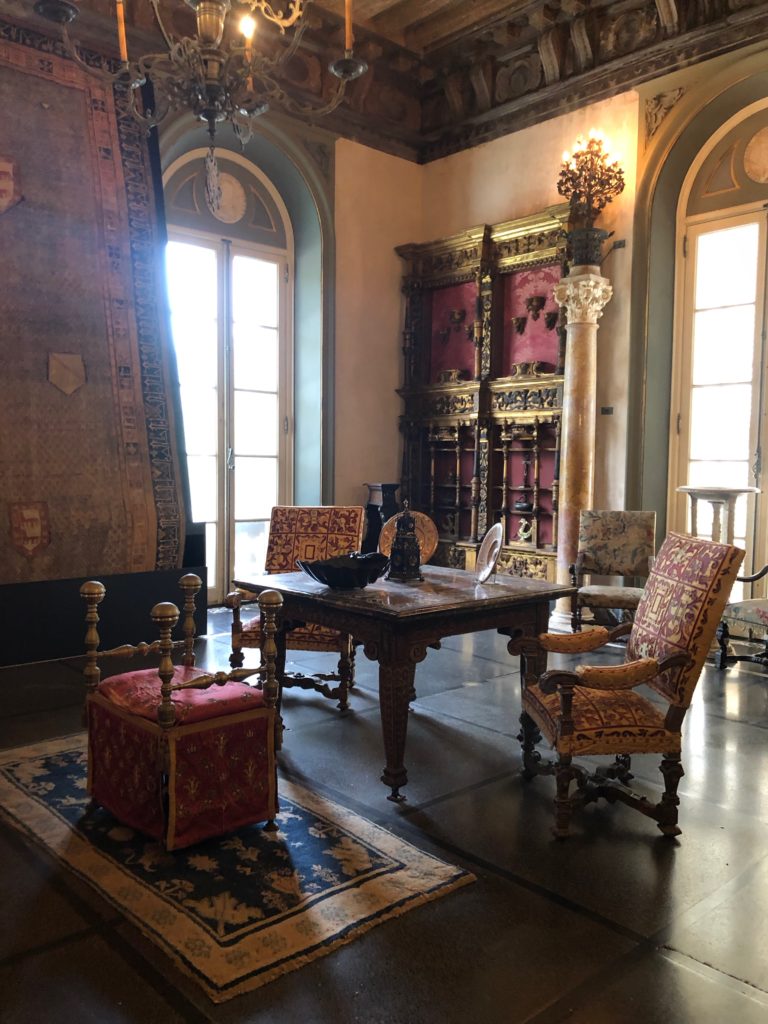
“Of particular note is the Admiral Carpet from the 1400s that contains symbols from the Muslim and Christian faiths and was created for the grandfather of King Ferdinand of Spain.”
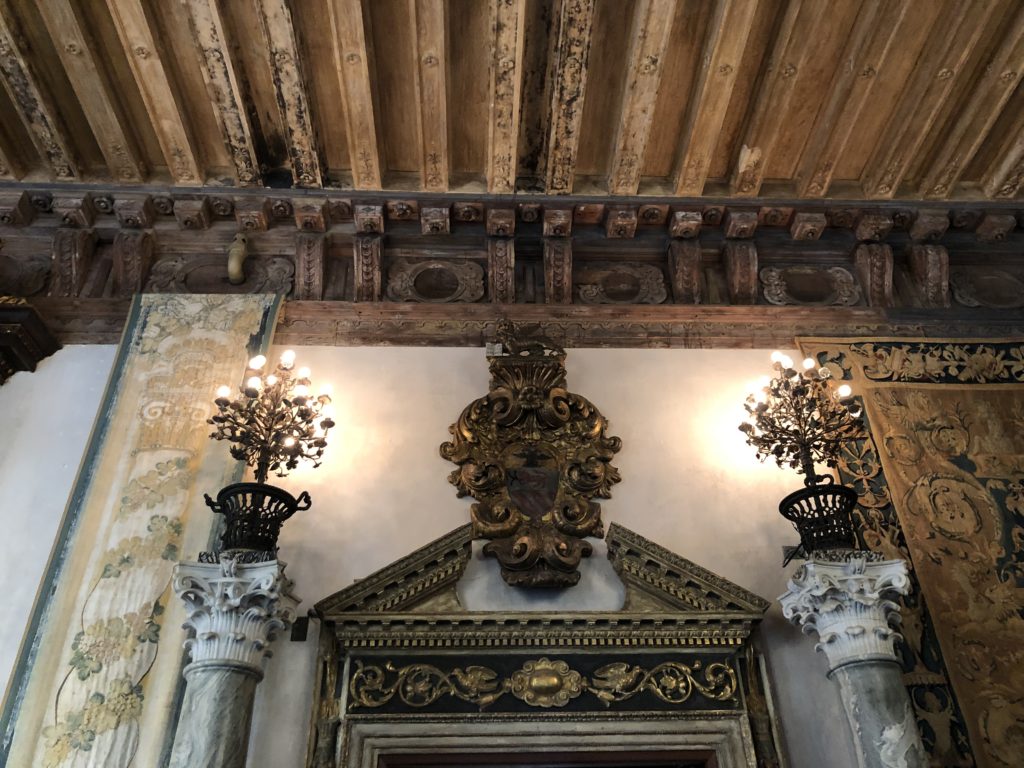
The ancient Roman marble columns were adapted to hold modern light fixtures.
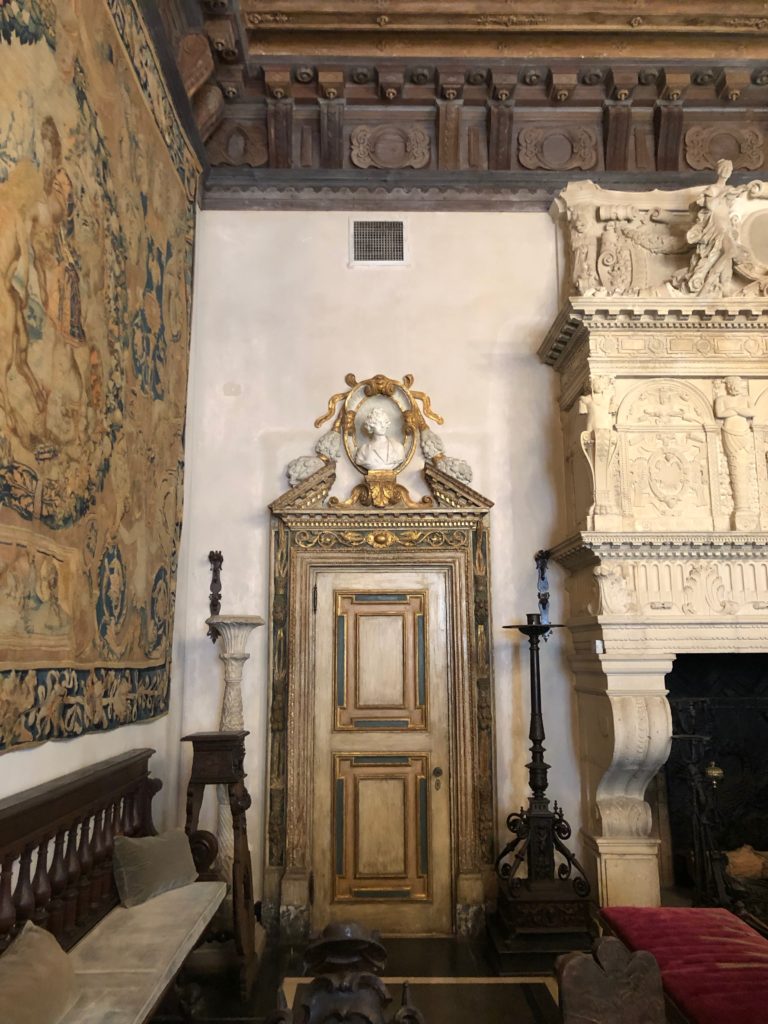
“Several of the important objects in the room were significantly altered by Vizcaya’s artistic director prior to their installation to ensure a better fit with the estate’s overall design. One of these was the fireplace from a French chateau to which the upper element was added.”
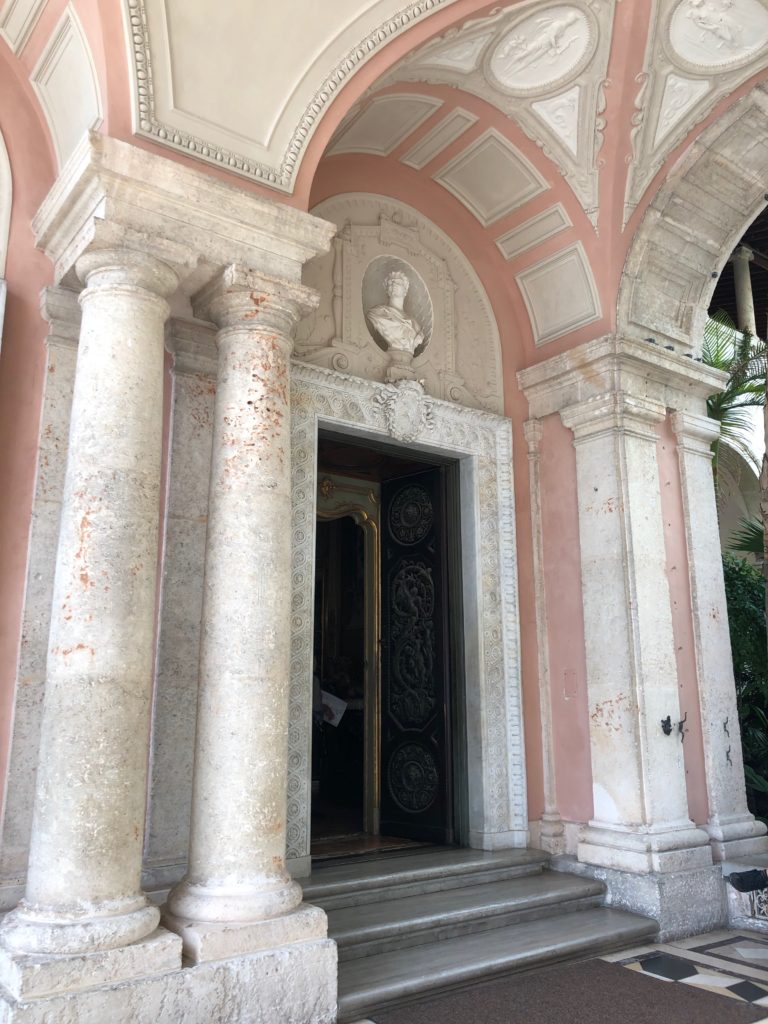
The East Loggia is particularly beautiful with its pink walls and applied decorations.
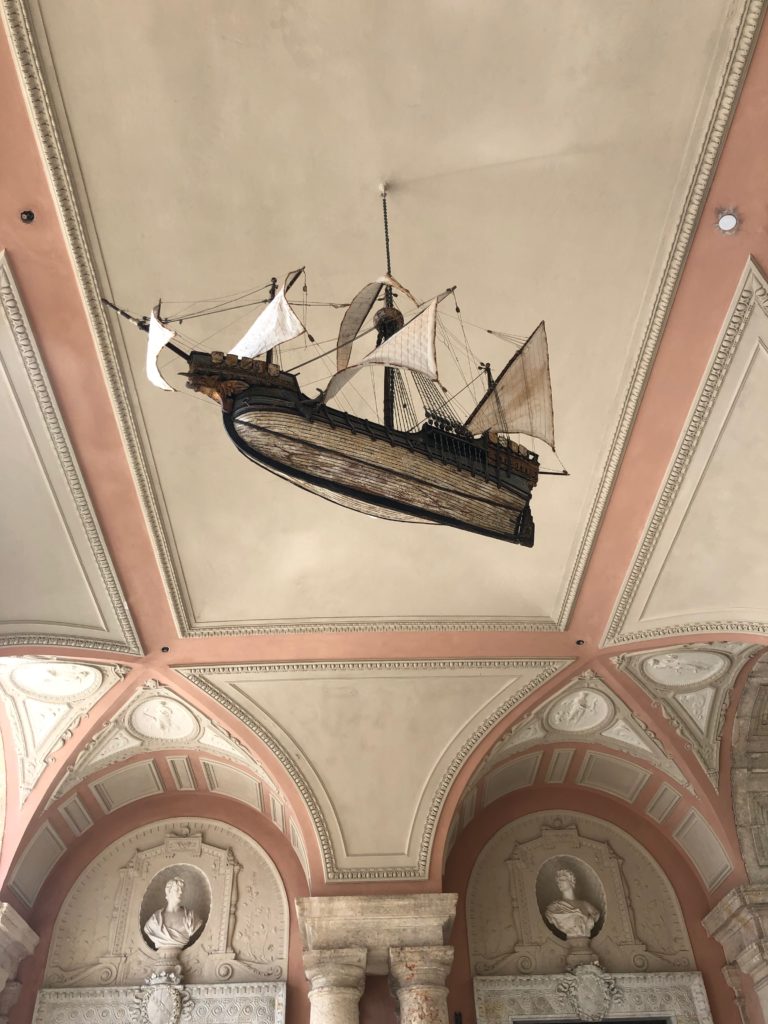
“Deering saw the waterfront as the main entrance of the house. In a 1916 letter to Paul Chalfin, the house’s main designer, he mentions their disagreement over the symbol of the house, by asking to put a caravel beacon on a (now nonexistent) sand island in Biscayne Bay for those arriving by boat. Deering wanted the caravel boat to be the primary symbolism of the house, yet Chalfin resisted. In extant blueprint drawings for yacht flags, both the seahorse and the caravel are elaborately illustrated, a maritime reminder that the argument was never properly settled. The massive and ornate 1916 model caravel hangs gracefully in the East Loggia, made by lawyer and model maker Henry Culver, perhaps as an unintended compromise. It would have been one of the first artworks a guest would encounter upon entering the estate from the seaside.”
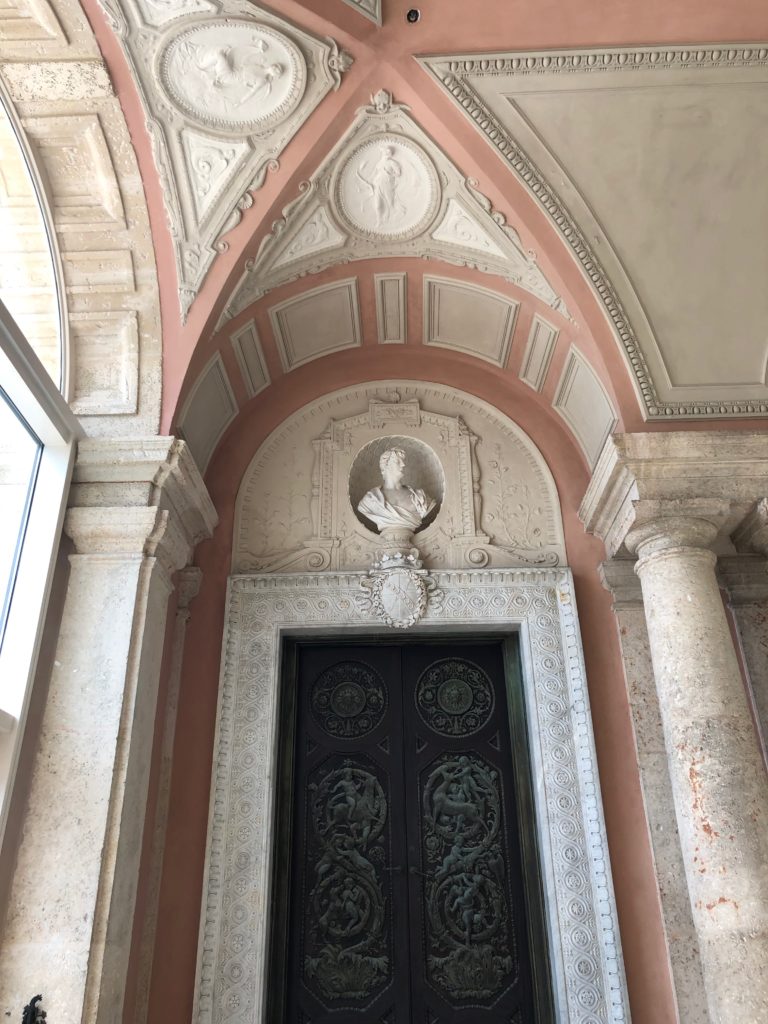
Again, heavy doors protect the interiors of the house from the elements in the East Loggia.

Here you can see how the East Loggia abuts the center Courtyard.
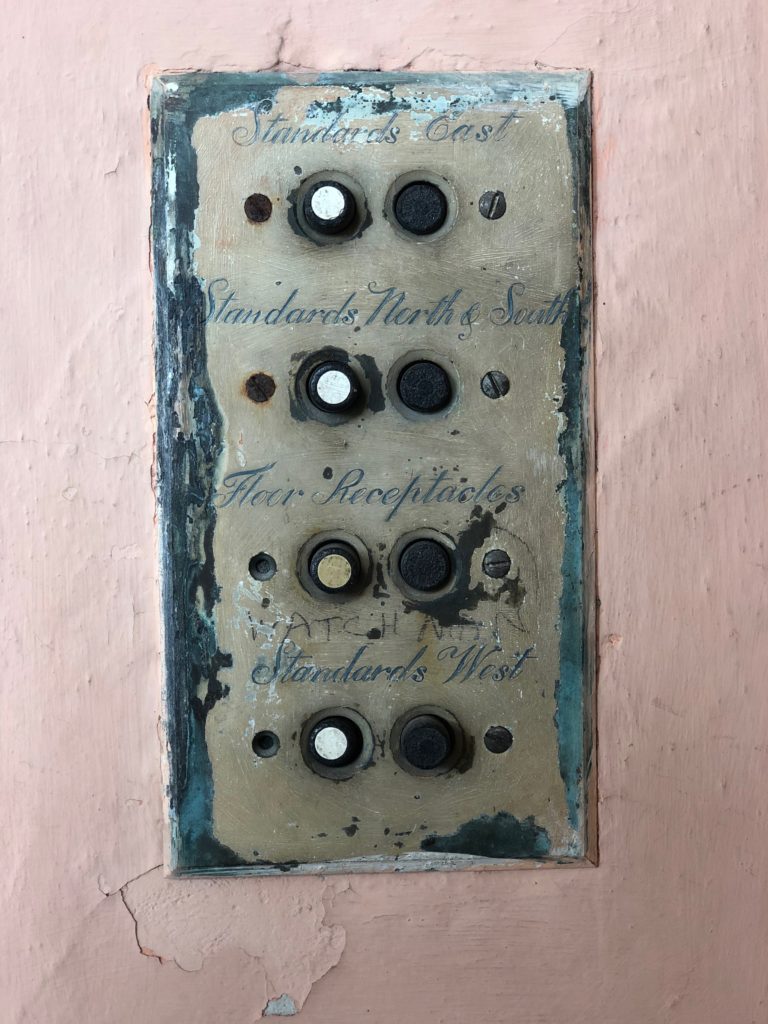
This switch plate sits to the left of the doorway and is visible in the photo above.
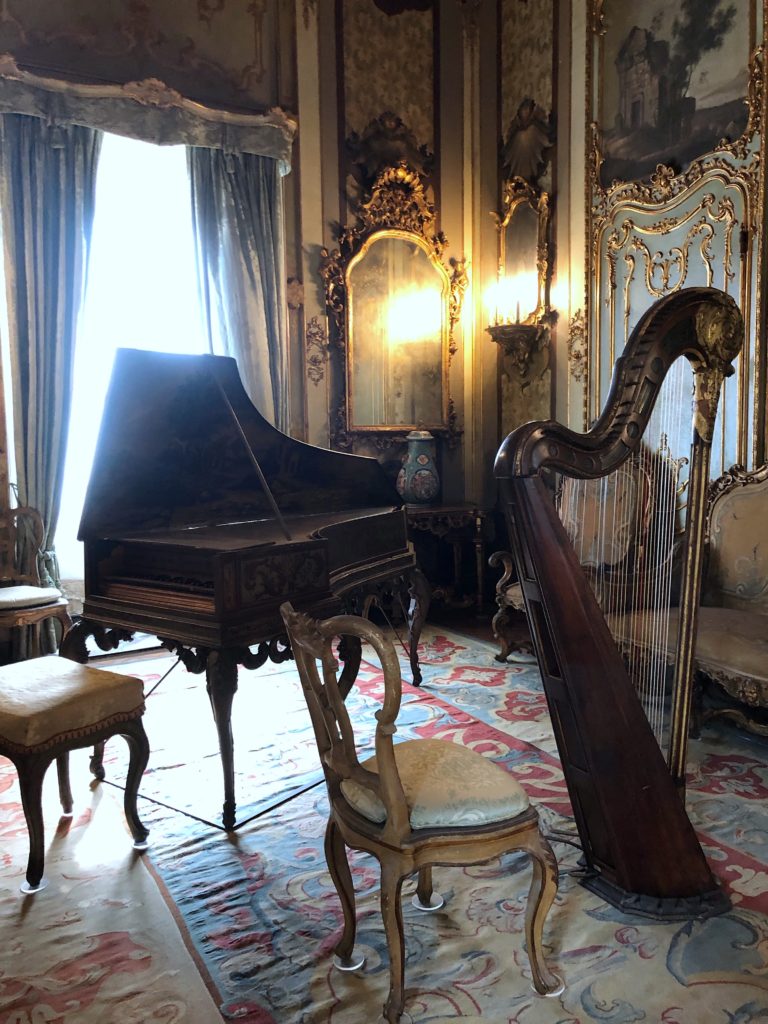
I apologize for this terrible photo of the Music Room. What’s interesting is that there aren’t that many interior photos of the house on the Vizcaya website.
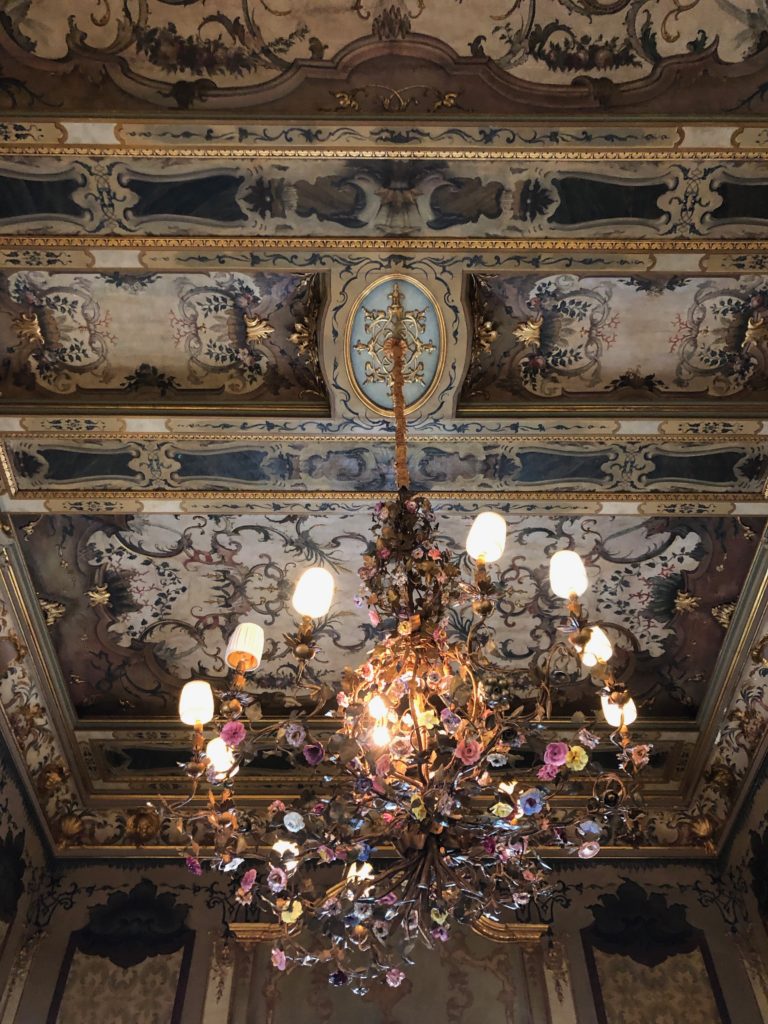
The Music Room looked like a small jewel box with the most incredible ceiling.
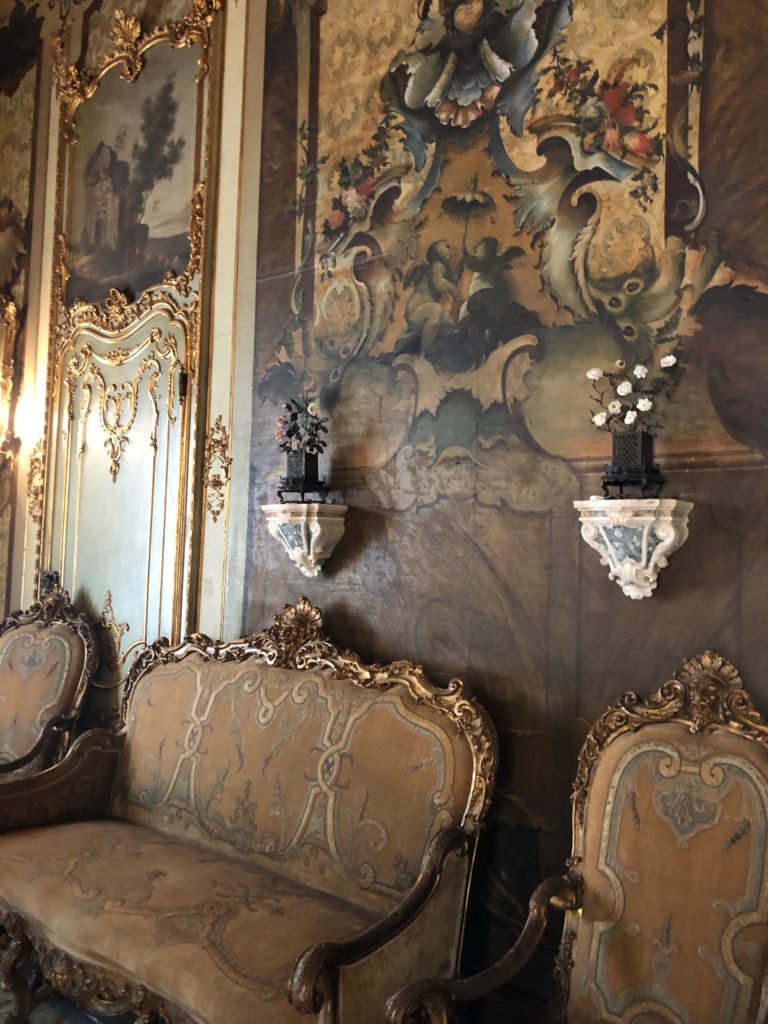
Another view of the Music Room that was inspired by Milan, Italy.
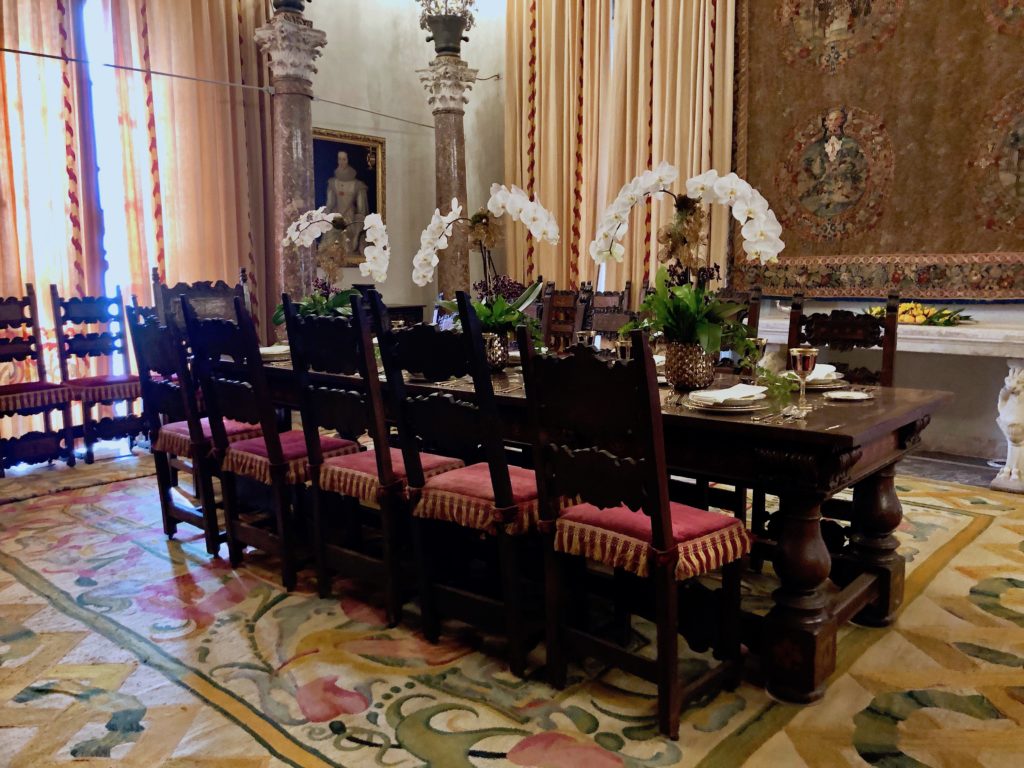
I don’t have details for the Dining Room but like the Living Room, it was designed in the “modern Renaissance interiors popular among art collectors in Europe and the United States.”
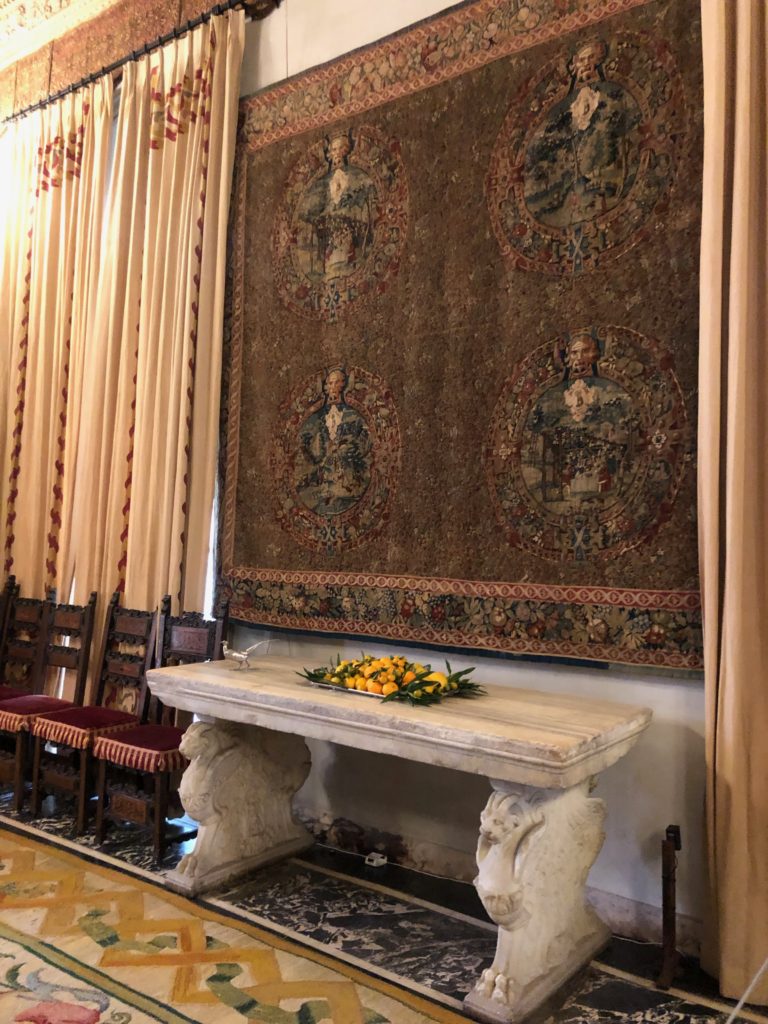
“With a watery landscape ideal for smuggling and a penchant for rampant local corruption, Miami basically ignored both local and national prohibition. There was always a drink to be had for the right person, and more importantly, the right price.”
“Adjusted for inflation, the $27,000 dollars that James Deering spent in 1915 on the initial order of alcohol for Vizcaya is approximately $637,900 in 2015. This number is staggering. Today, investing that much in alcohol (without any particularly rare or notable bottles) seems borderline insane. However, when Deering’s artistic director, Paul Chalfin, submitted the request on Deering’s behalf, the money was sent immediately, no questions asked.”
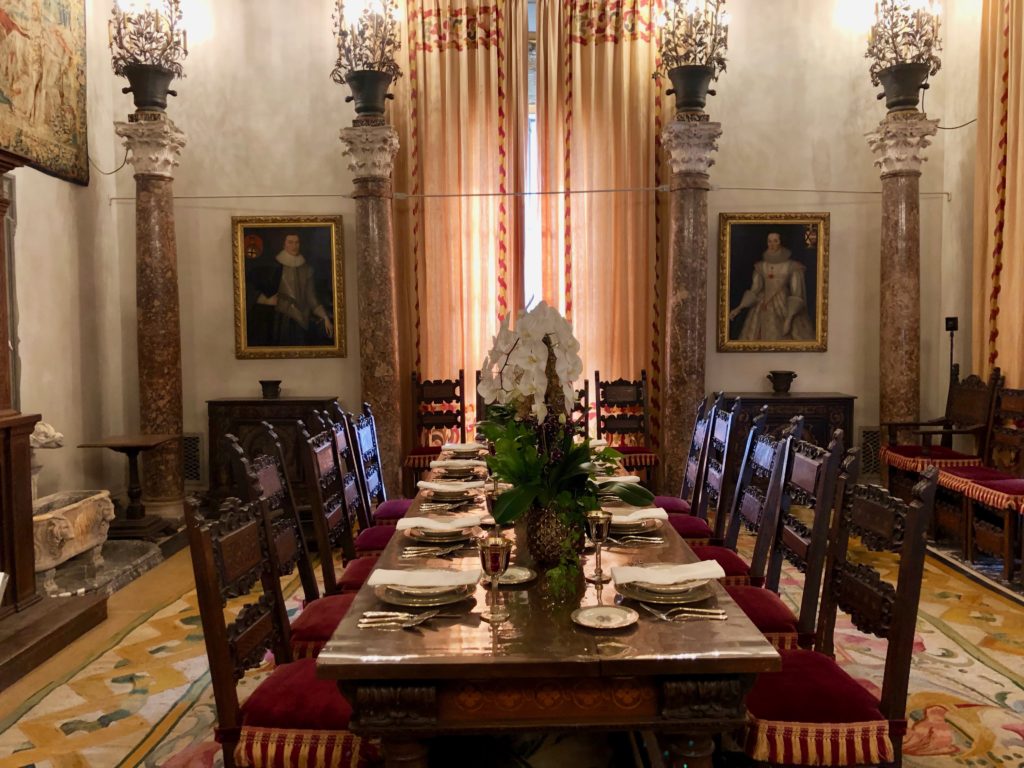
Another view of the Dining Room.
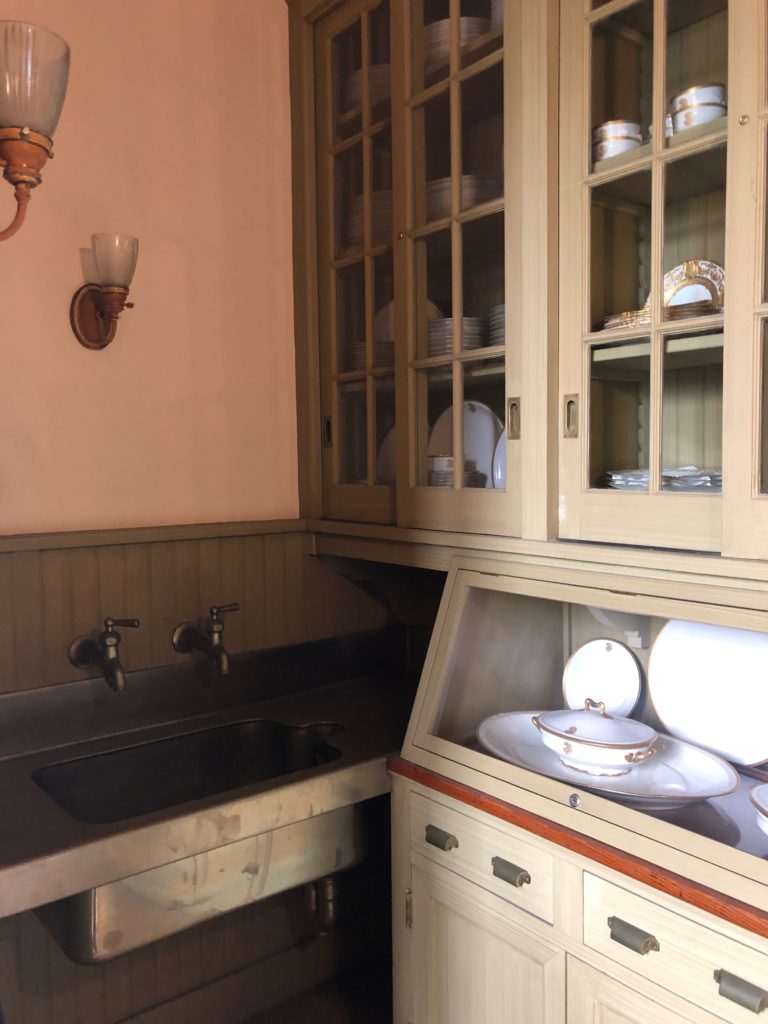
This small Butler’s Pantry is not labeled on the map but sits between the Dining Room and Enclosed Loggia.
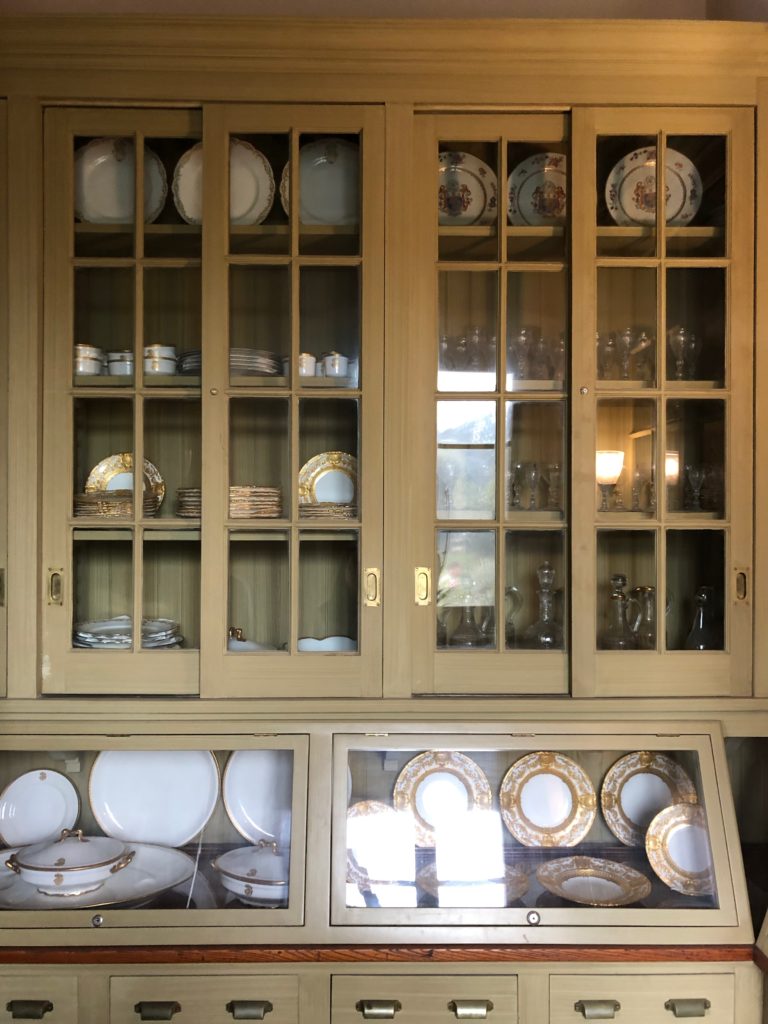
Display cabinets have been created over the original wood countertops.
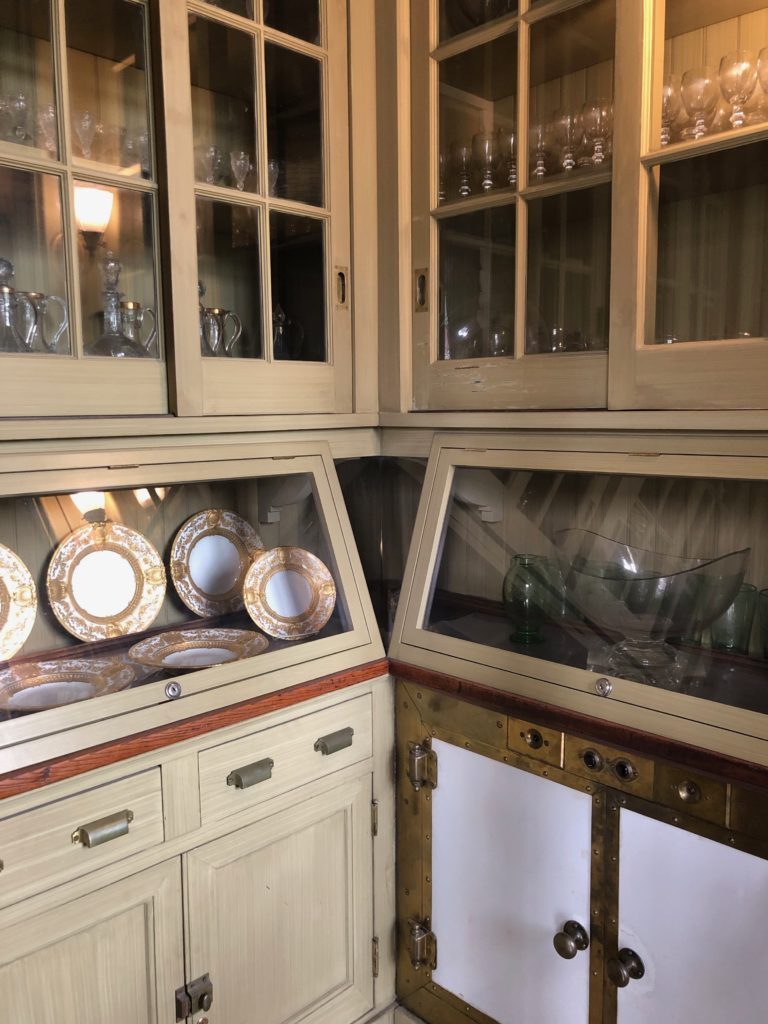
I’m assuming that’s a warming over in the Butler’s Pantry. The dumbwaiter is located in the Serving Pantry.
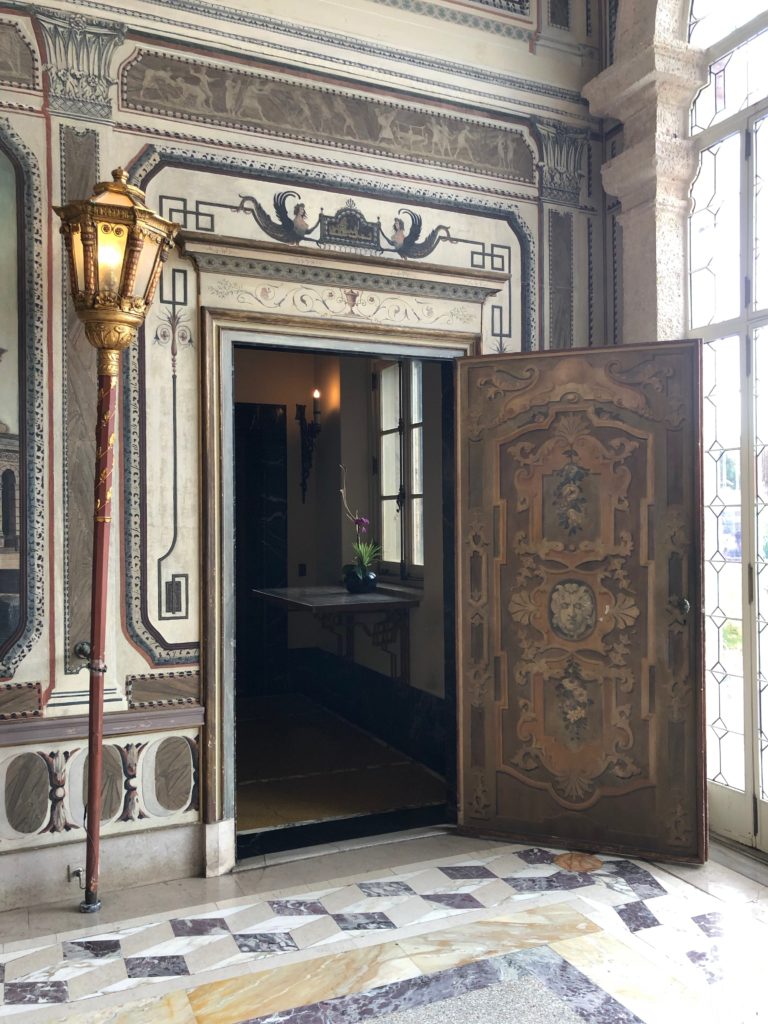
The door in the Enclosed Loggia leading to the Butler’s Pantry.
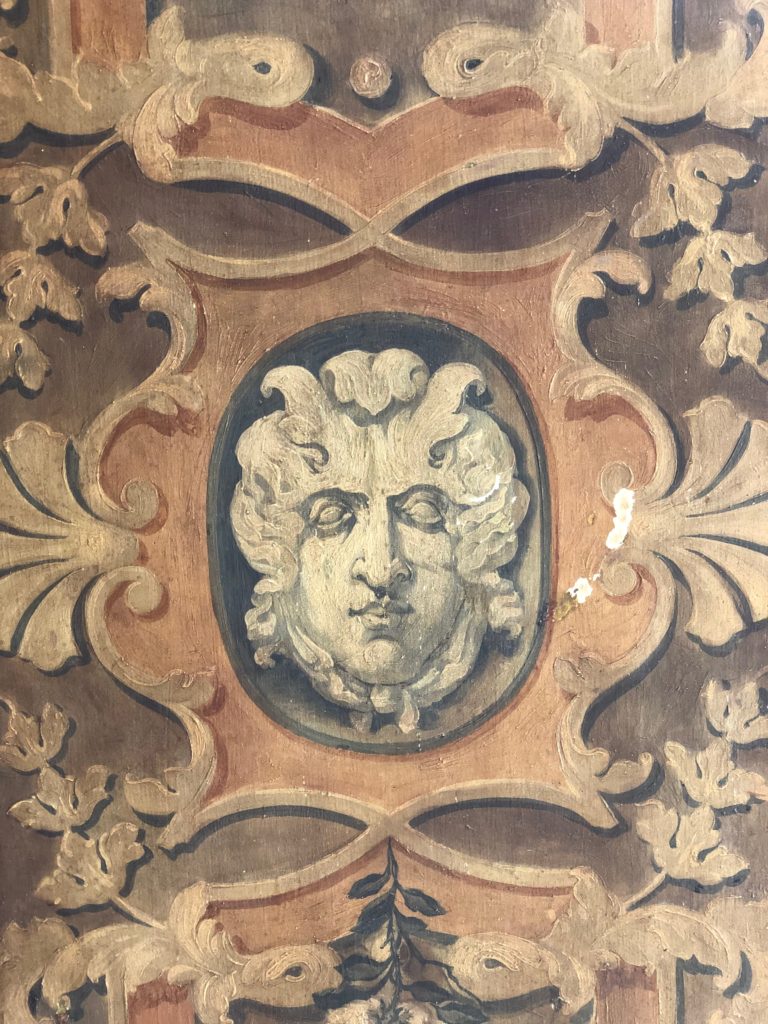
A detail of the beautiful interior painted door leading to the Butler’s Pantry.
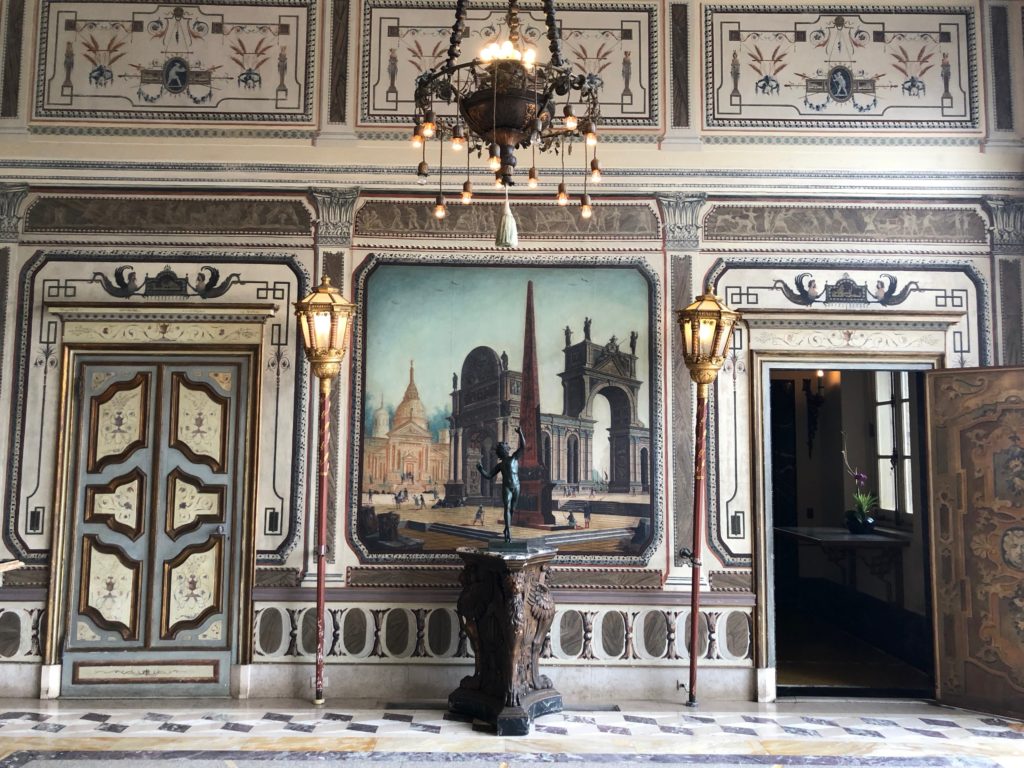
The Enclosed Loggia is the most beautiful room in Vizcaya. It leads to the South Terrace and the gardens.
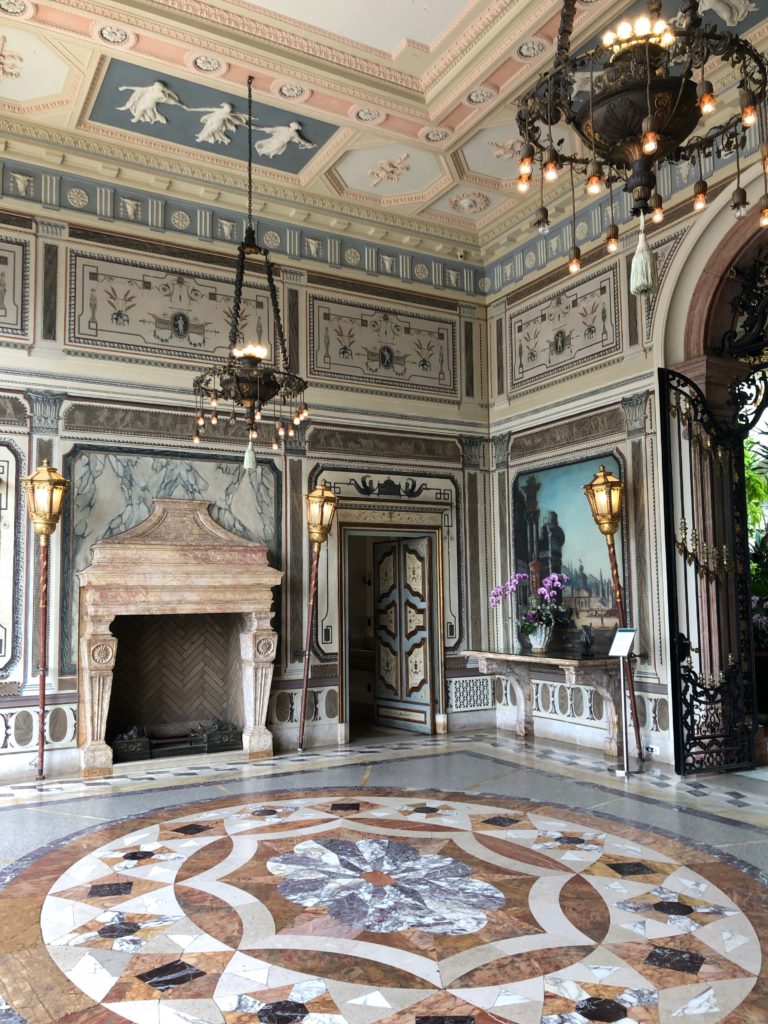
The Enclosed Loggia is another room that combines so many different patterns, painted surfaces, and materials to great effect. I don’t have much information on this room but the 18th-century gilded iron gates that lead to the South Arcade are originally from the Pisani family palace in Venice.
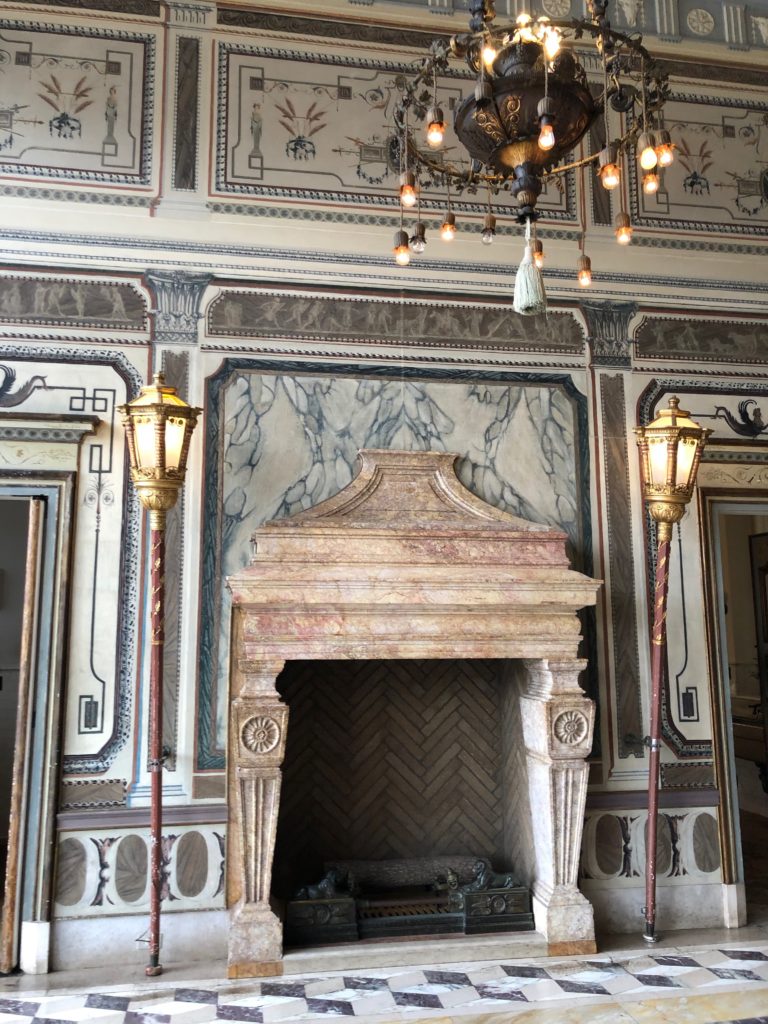
I saw the Enclosed Loggia referred to as a teas room so perhaps this was where tea was served since it sits between the Serving Pantry and Butler’s Pantry. Also, I couldn’t find a book that gives details on each room in the gift shop. If you want to remember details of each room, I suggest taking a photo of the information placard in each room. I forgot to do this in some rooms which is why I don’t have complete descriptions.
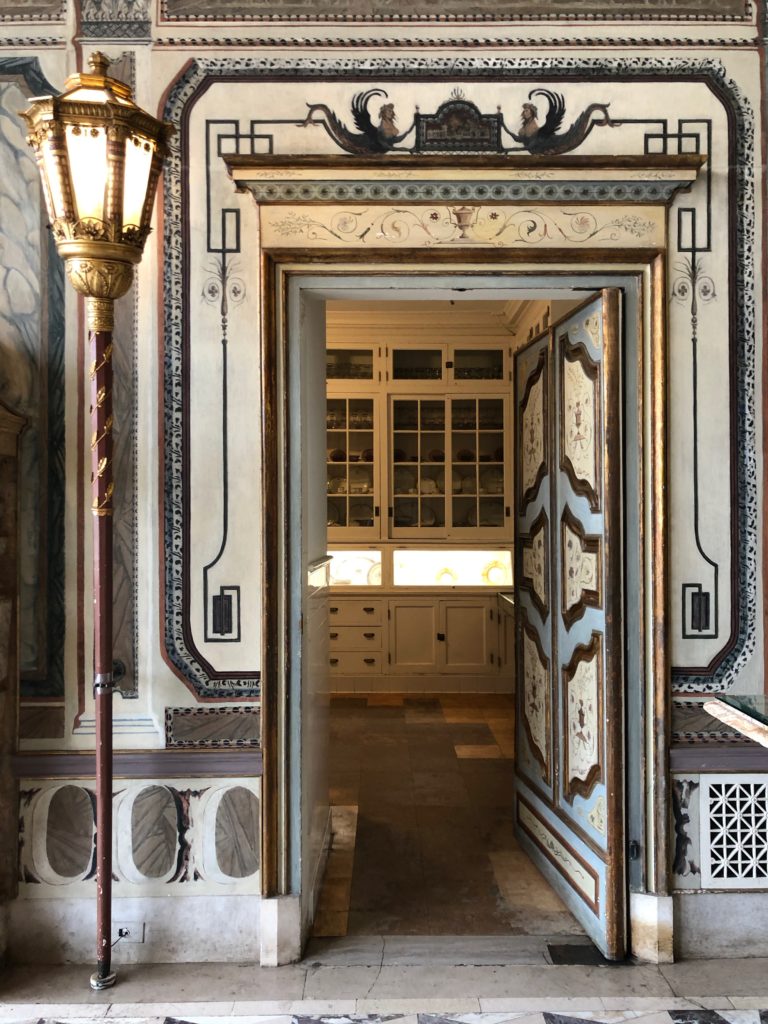
The Serving Pantry sits off the Enclosed Loggia. In most old estates, the kitchen and store rooms would be located “below stairs” but since Vizcaya sits on the water, it can’t have a lower level. The Kitchen is actually located on the second floor and I read that it was located there to avoid food odors downstairs. Staff quarters are also located on the second floor. 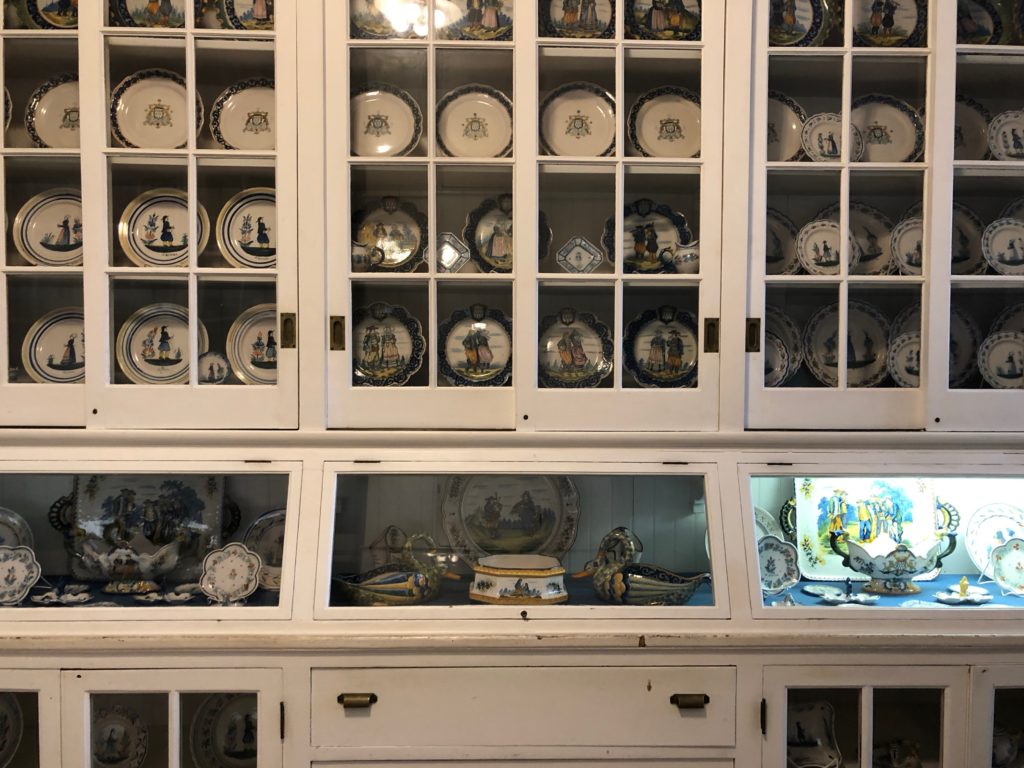
“The cabinets in the Serving Pantry contain examples of the dishes used at Vizcaya and on Deering’s boats. Deering was a businessman who made his wealth through the production of modern farm equipment. It is not surprising that he insisted on innovative technologies to improve working conditions and staff efficiency at Vizcaya.”
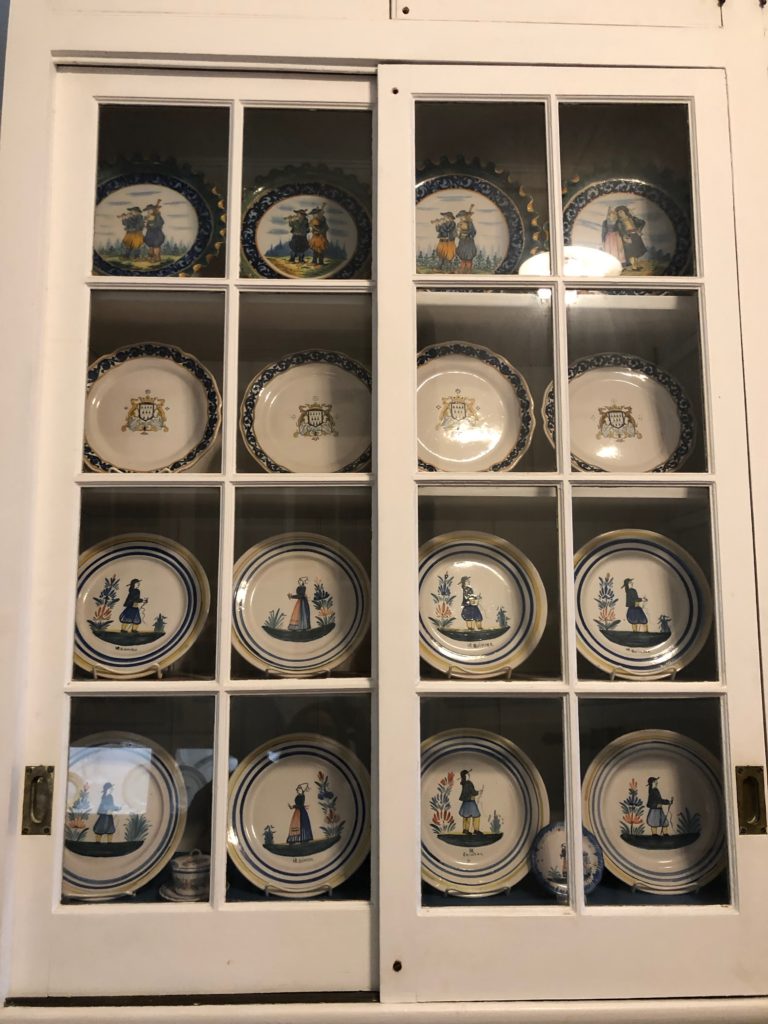
This looks like faience.
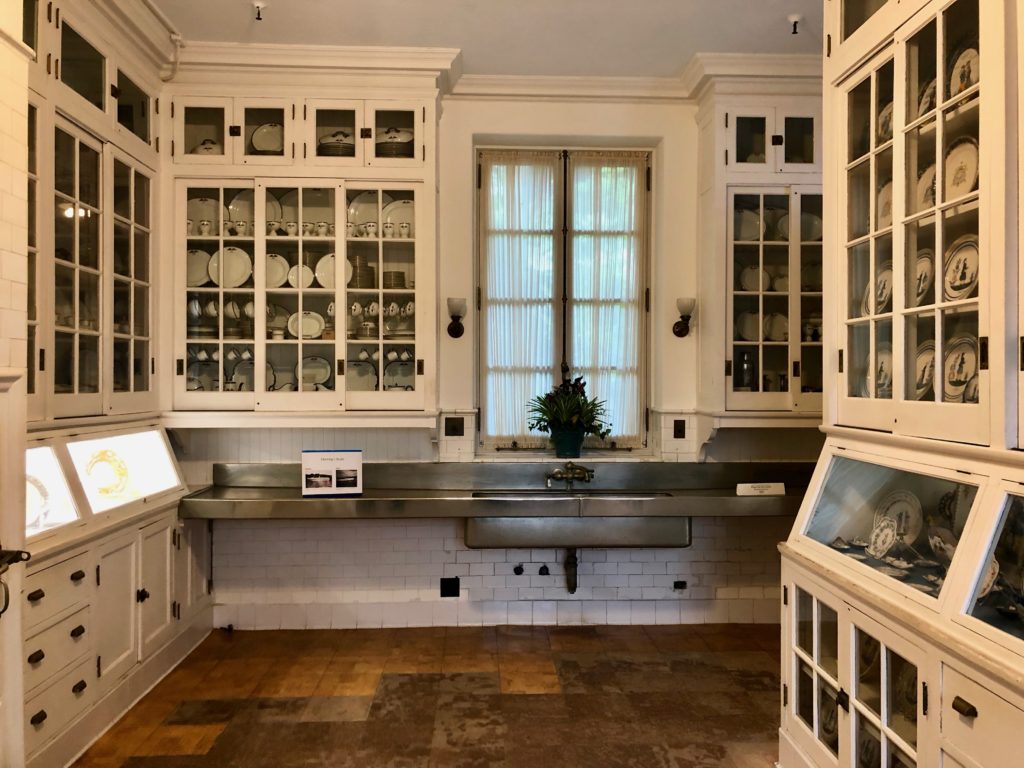
“On the walls behind, there is a dumbwaiter that transported food from the kitchen above, refrigeration equipment, a master clock that was used to synchronize all other clocks at Vizcaya, and an annunciator system that allowed Deering and his guests to call the staff from around the house.”
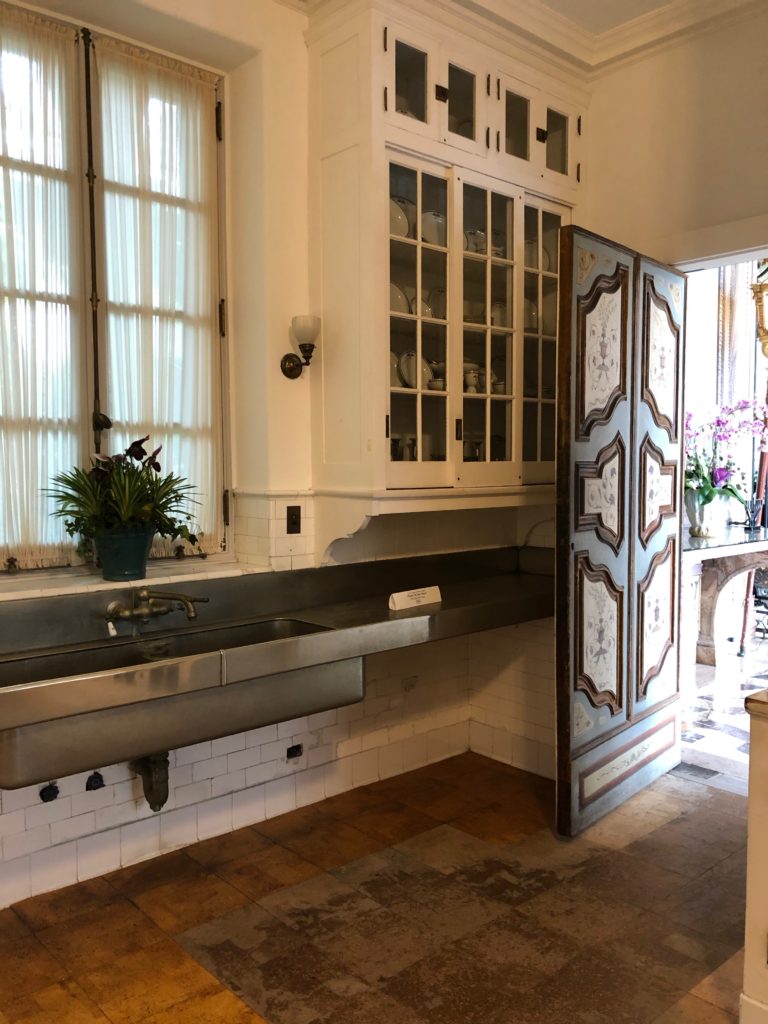
There are two doors leading to the Serving Pantry from the Enclosed Loggia. Perhaps one was used to enter and one was used to exit the room.
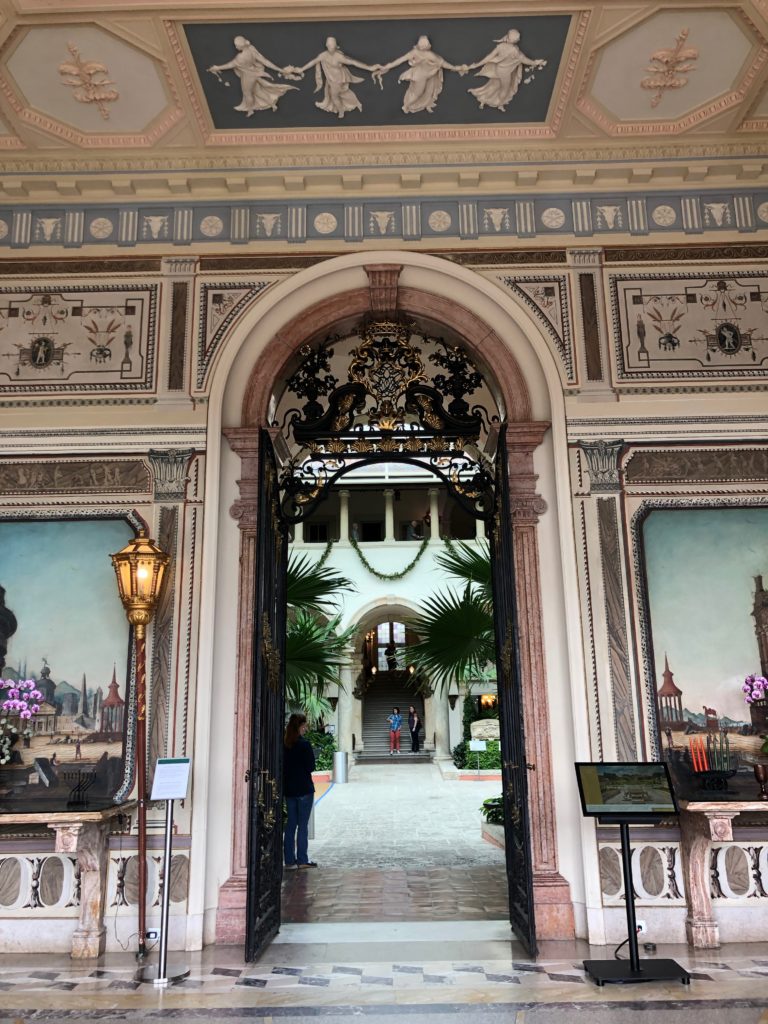
The Enclosed Loggia leads to the South Arcade and the center Courtyard.
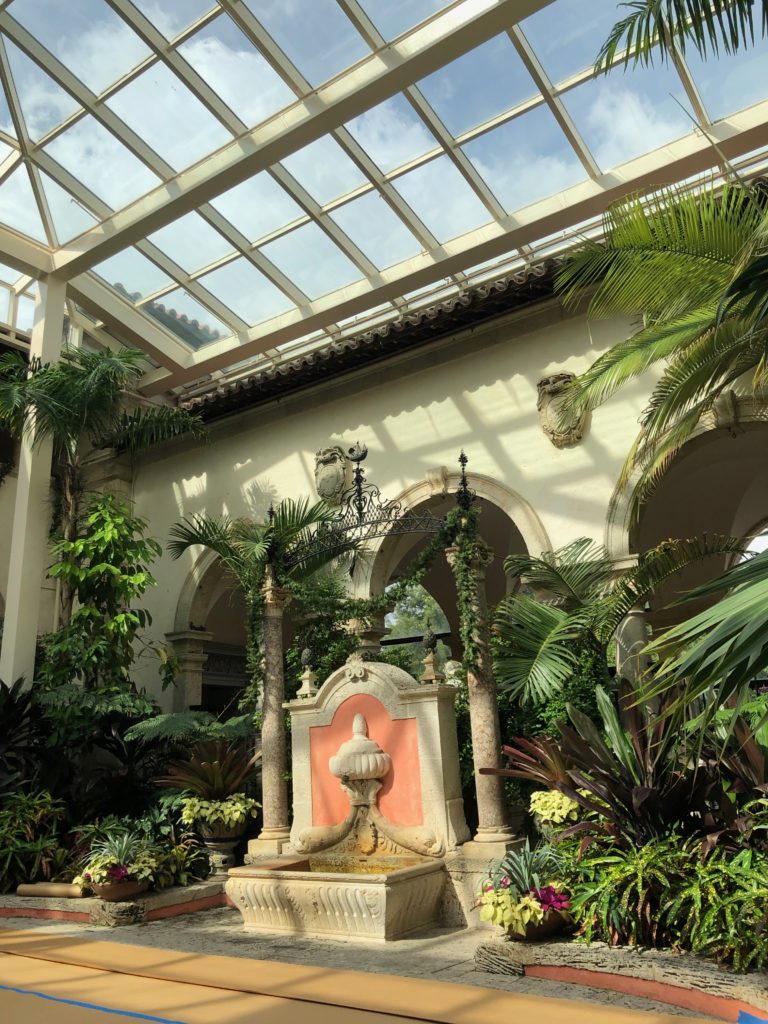
A fountain in the center Courtyard.
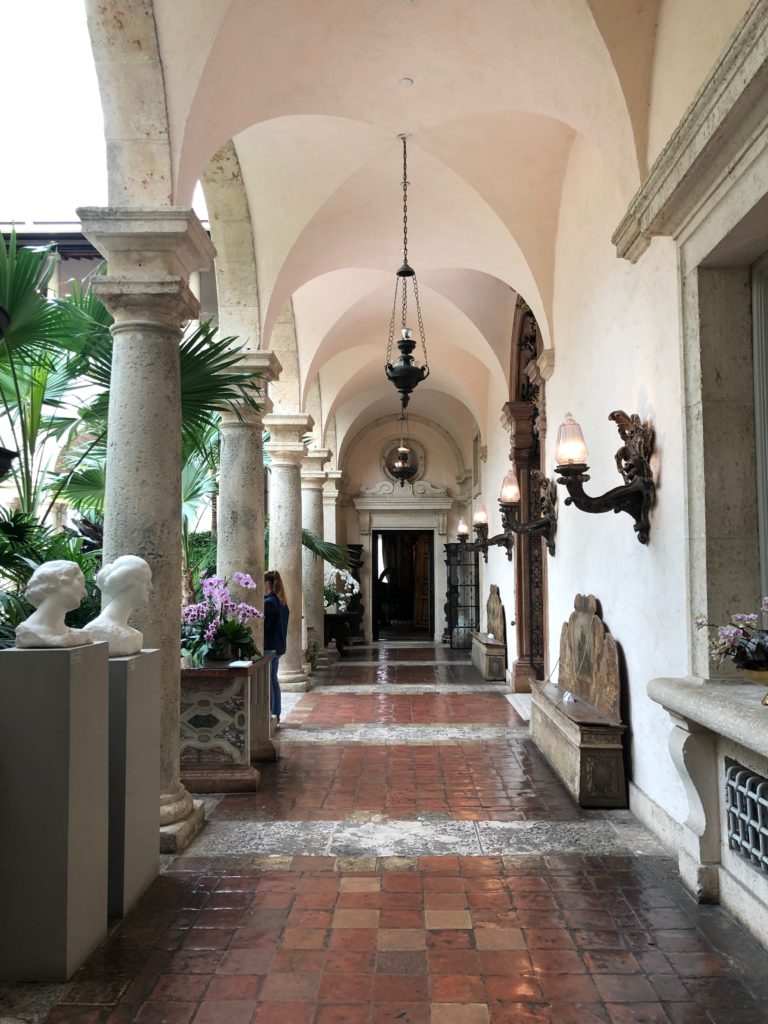
A look at the South Arcade with the gates to the Enclosed Loggia on the right.

The view of the South Loggia as painted by John Singer Sargent who was a frequent guest at Vizcaya.
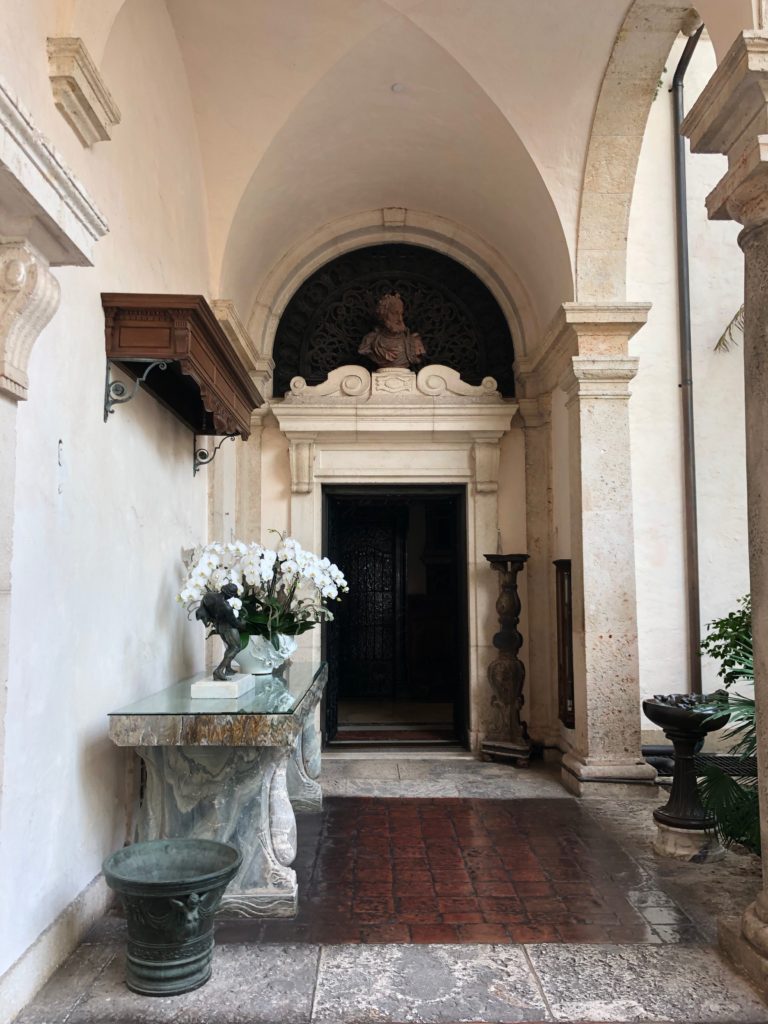
This door off the South Arcade leads to the Hall on the right side of the entrance and leads to the Flower Room beyond.
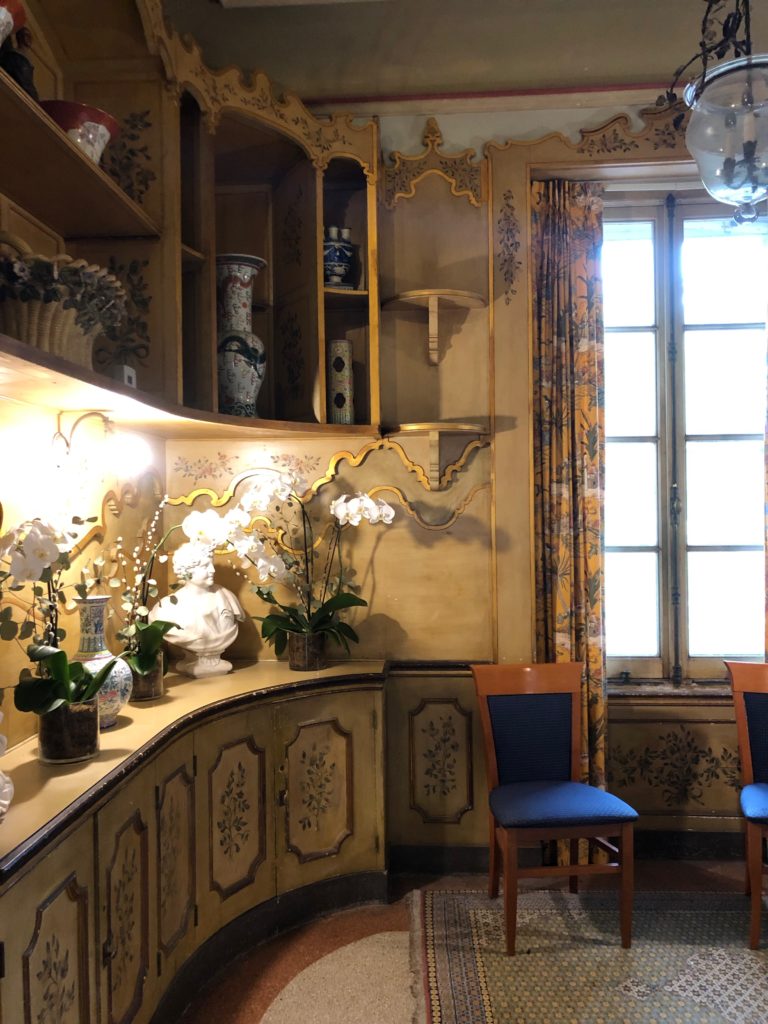
The Flower Room is located just to the right of the Entrance Loggia and Hall. It’s where flowers were cut and arranged for the house. The design of the room references its function through the painted floral motifs and the organic shapes of the shelves. This side of the house was dedicated more to staff and now this room is where volunteers prepare for tours of the house and gardens.
I will post rooms on the second floor of Vizcaya in a separate post so check back later for those.
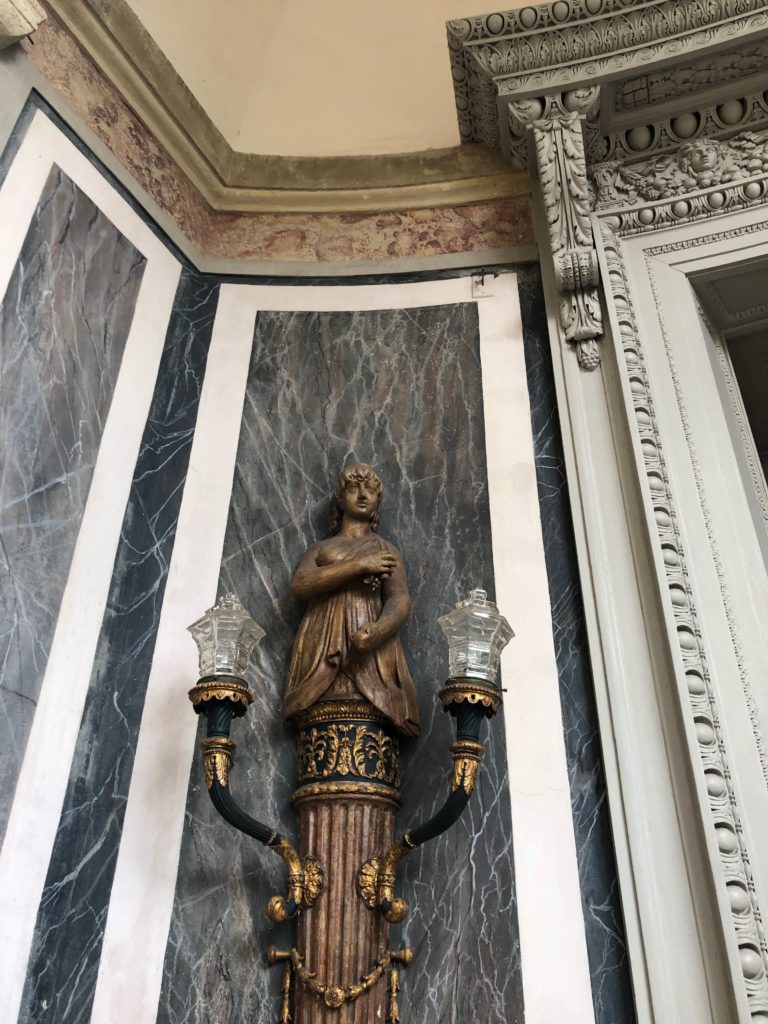
All photos by Heather Clawson for Habitually Chic.



